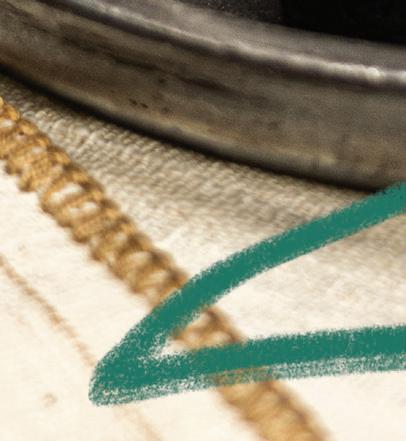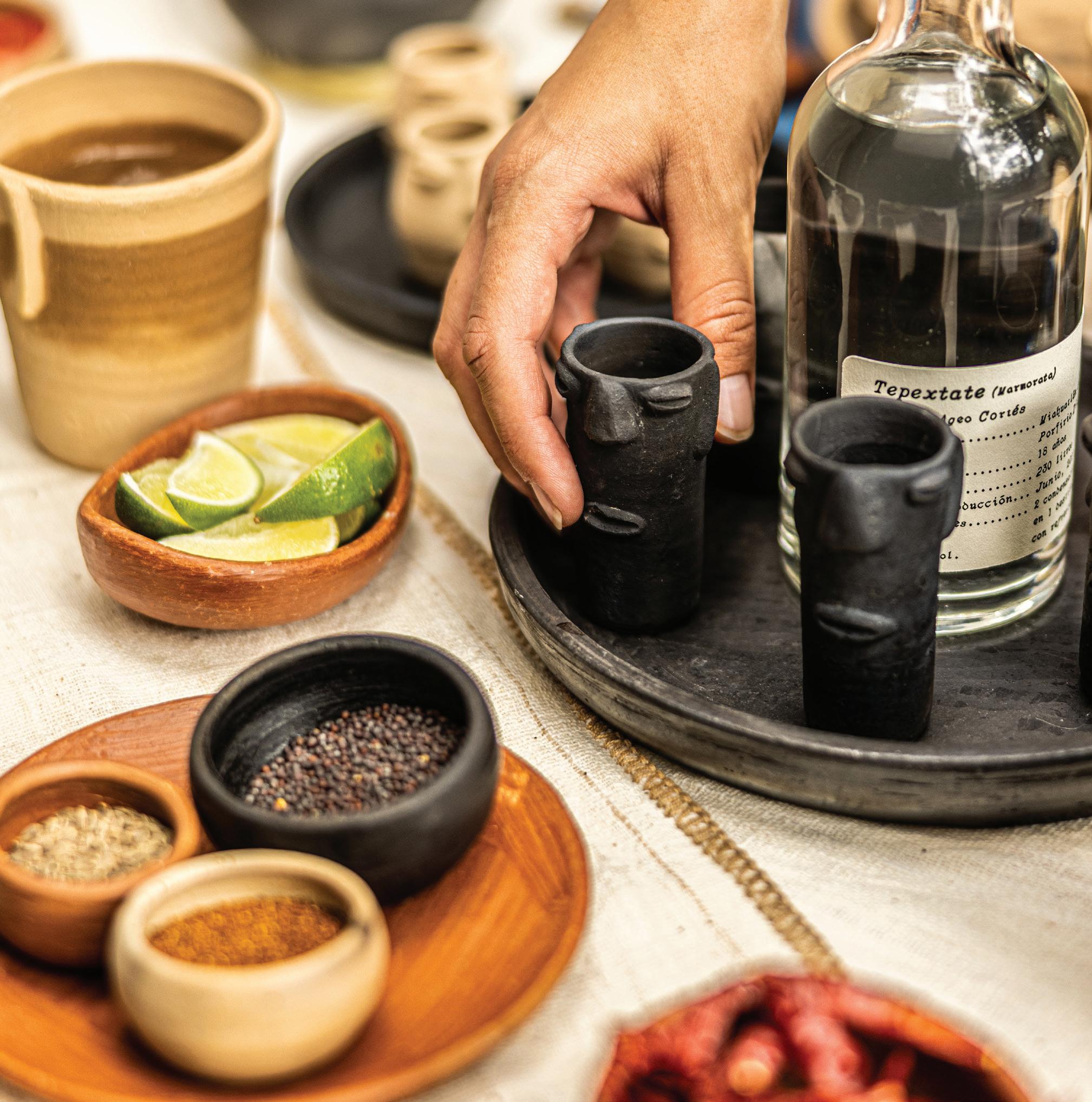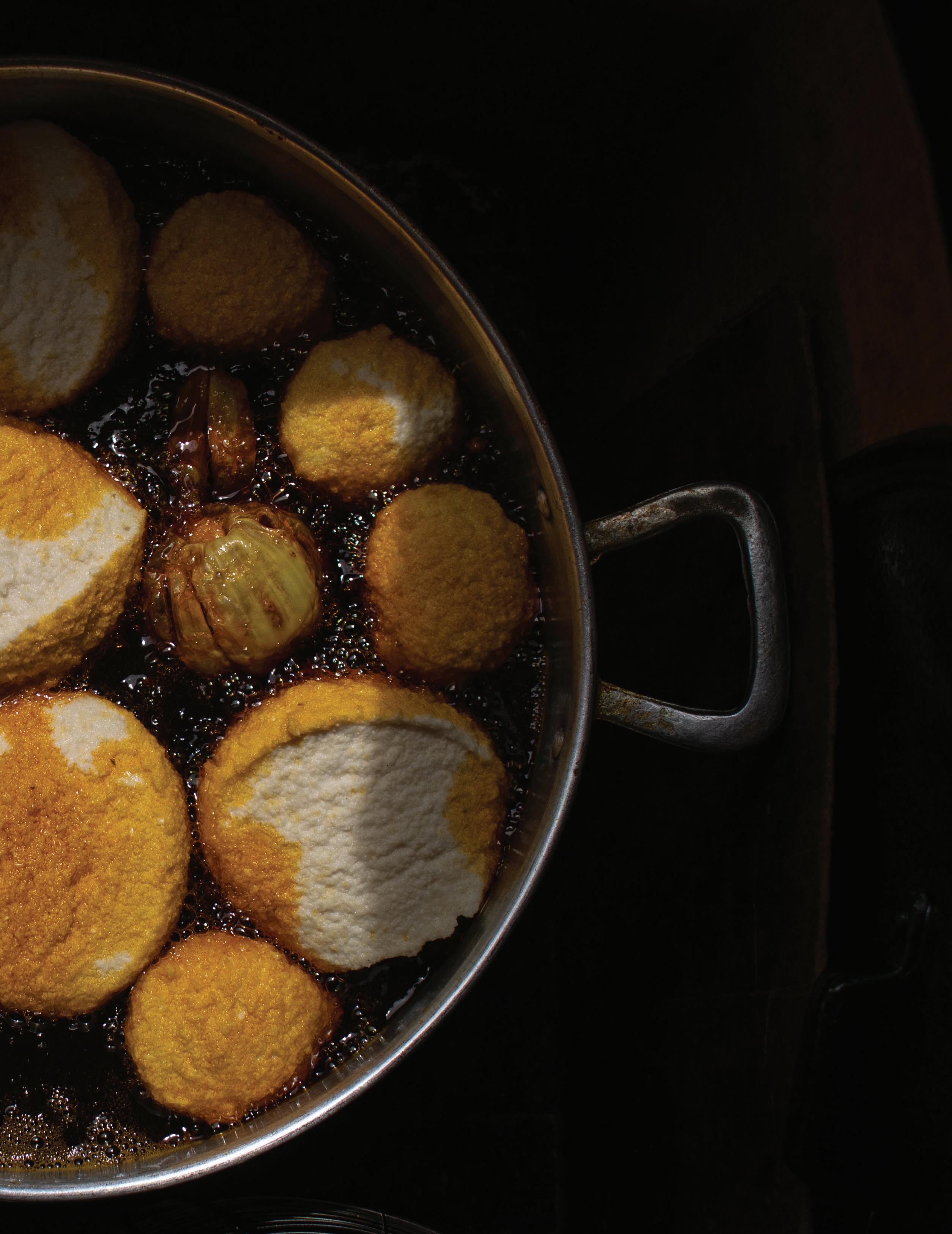TEHRAN'S TEXTURES / OAXACAN SOUP / AKARA ABROAD





















Layla
COPY
















































Layla
COPY


























This edition feels vintage, careening from Asia to the Americas, the Balkans to Brazil, the arresting photography and intimate portraiture are what you all have come to expect from us over the last six years.
Have you ever noticed on the front of the magazine, the little idiom, ORIGIN FORAGING? It’s on the bottom center of the cover, and, at first (and maybe still?), people thought that was the theme of a particular edition of the magazine. But we put that stamp on each of our covers, as a way of saying who we are and what we do.
Origin is our framework for understanding the world, and also what connects these disparate geographies and communities. It’s about the gap between where we are and where we began, and the immense power of the stories that fill those universal voyages. The story of food is the story of humans, and neither can be told without the role of migration.
Uprooting by will or force is the crux of the universal, “Us.” Sometimes uprooting can be painful, other times, liberating, but without the knowledge of where you started, that gap is filled with the disorientation of false truths, or worse, a void.
The story of food is how we fill and how we feel. We hope you enjoy our latest collection of origin stories, foraged from around the globe.
With gratitude, Stephen

A herd of goats and their shepherd on the road between Kashan and Isfahan.

26 58 44

06 Decolonizing Korean Food | TEXT Giaae Kwon ILLUSTRATION Sinae Park
PHOTOGRAPHY Lyric Lewin 14 A Culinary Powder Keg | TEXT Irina Janakievska 26
Starting with Silog | TEXT Mark Corbyn PHOTOGRAPHY Martin San Diego 34 The Ceremonial Soup that Sustains a Culture | TEXT & PHOTOGRAPHY Fabricio González
Soriano & Renée Alexander 44 A Feel for Tehran | PHOTOGRAPHY & TEXT Shabnam Ferdowsi 56 Lemon Street Market | POEM Ojo Taiye ART Dakarai Akil 58 Pennyroyal, Rue and ‘Hickry Pickory’ | TEXT Dr. Julia Fine & Dr. Ashley Buchanan 66 The Ticket to Freedom | TEXT Zahra Simpa PHOTOGRAPHY Rafaela Araújo 74 A History of Radicchio | TEXT Margarett Waterbury ILLUSTRATION Alexandra Bowman 80 Rendang for Eid | TEXT Annie Hariharan PHOTOGRAPHY Melati Citrawireja


Shabnam "Shab" Ferdowsi is a legally blind photographer born and raised in Los Angeles. Before Covid, she was primarily weaving her way around the music industry in the media and experiential space until she started performing on stage herself. Once everything went on hiatus, one thing led to another, and a pizza pop-up and catering business was born out of Shab's home kitchen. After a year roaming LA's parking lots, backyards, and bar patios, it was time for another shift. Nevertheless, food has now become the new centerpiece for building community, pursuing creativity, and telling impactful stories.

The food writer and recipe developer is a Macedonian, Kuwait-raised Londoner.

Giaae Kwon is a food and culture writer whose writing has appeared in Taste, Buzzfeed Reader, Catapult, and Electric Literature, amongst others. She writes the newsletter I Love You, Egg (iloveyouegg. com), and divides her time between New York City and Los Angeles.

When not spending time with his family (wife, daughter and mini dachshund), Mark occupies himself with cooking and writing about Filipino food as part of his work as a cofounder of The Adobros, a supper club and pop-up business based in London.

Sinae (she/her) is an independent illustrator and designer based in the UK and I use drawing as non-linguistic tool to propel conversation. When Sinae is not drawing, she designs and edits Fortified. You can find her swimming in a local pool or waiting for her third coffee of the day, worrying about getting too coffeed.

Martin San Diego is an independent documentary photographer from the Philippines. He is a multiple grantee of the National Geographic Society, a finalist of The Aftermath Project, an alumnus of the Angkor Photo Festival Workshops, a Diversify Photo member, a Visual Journalism graduate of the Ateneo de Manila University, and a fellow of the Konrad Adanauer Stiftung Media Programme Asia. Martin regularly contributes to The Washington Post and VICE News on notable Philippine issues— the Drug War, COVID-19 pandemic, and the environment.

Dr. Fabricio González is a professor of humanities at the University of Papaloapan in Oaxaca, Mexico. Driven by an adventurous palate, a deep appreciation of culinary traditions and a penchant for photography, he has focused the lens on the Chinantec region, exploring the relationship between territory, resources and food.

Ojo Taiye is a Nigerian eco-artist and writer who uses poetry as a handy tool to hide his frustration with society. Taiye’s most recent work is largely concerned with the effects of climate change, homelessness, migration, drought and famine, as well as a range of transversal issues ranging from racism, black identity and mental health. His current project explores neocolonialism, institutionalized violence and ecological trauma in the oil-rich, polluted Niger delta. His poems have been published or are forthcoming in Narrative Magazine, Salamander, Consequence Forum and Stinging Fly among others. Taiye worked on the Future(s) 2021 with Catalyst Arts and Belfast Photo Festival and 2021 Sustrans Black History Month Art Project.

Renée Alexander grew up in North Carolina and failed to master mountain biking in Bend, Oregon, before settling in San Francisco. When she isn't hosting a porkthemed dinner party or writing about food and booze, she is chasing solar eclipses and collecting travel bugs in remote locations around the globe. You can read her work online at StoryScout.net.

Julia Fine is a food writer and historian. Her work on food, imperialism, and the environment has been recognized by the Association of Food Journalists, the Association for the Study of Food and Society and the Oxford Food Symposium. She is currently a Plant Humanities Fellow at Dumbarton Oaks Museum in Washington, D.C.

Dakarai is a Los Angeles based collage artist, designer, painter and editorial illustrator from Cleveland, OH. Primarily working in collage and design, he has selfpublished three art books that catalog works created between the span of 2014 to 2021. He has participated in numerous group and solo exhibits over the span of 10 years and has had work published in publications such as The New York Times, Wired Magazine, Readers Digest and several more.

Dr. Ashley Buchanan is a historian of the early modern world, with a particular interest in plants, recipes and medicinal cultures in early modern Europe. Her research spans many topics including the history of science and medicine as well as the dynamics of gender and authority. Her current book project investigates the social, cultural and political significance of pharmaceutical experimentation as well as the medicinal and botanical patronage at the court of the last Medici princess, Anna Maria Luisa de Medici (1667–1743).

Zahra is an ardent lover of words. When she's not writing, she's burying her face in a great story. She hopes to visit Cappadocia and ride a hot air balloon while relinquishing in the beauty of nature.

Margarett is an author, editor and freelance writer who lives in Portland, Oregon. She writes about drinks, food, plants, agriculture and how people interact with their environments. She is the author of Scotch: A Complete Introduction to Scotland’s Whiskies (Sterling, 2020), and contributes regularly to national trade and popular publications.

BACK COVER ARTIST
Rafaela Araújo is a Brazilian freelance photographer and journalist. Find her on Instagram at @raacph and on Twitter at @raacp

Melati Citrawireja is an IndonesianAmerican photographer and writer living on Ohlone land in Oakland, California. She enjoys growing Southeast Asian vegetables and practicing Indonesian family recipes for her food project Three Salted Fish.

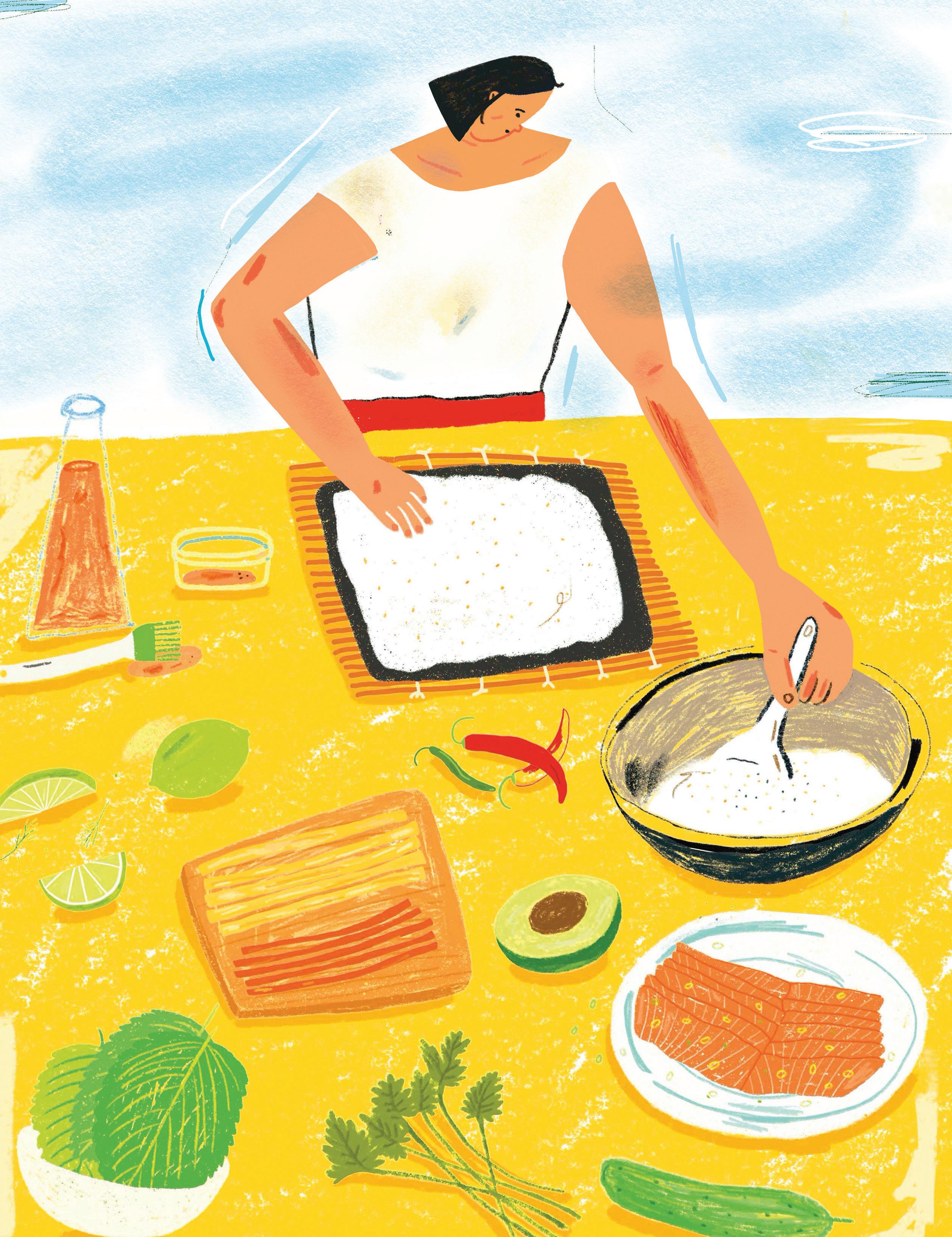
Japan’s occupation caused deep and lasting wounds; calling dishes like gimbap ‘the Korean version of…’ rubs salt in them.
TEXT Giaae Kwon ILLUSTRATION Sinae Park PHOTOGRAPHY Lyric Lewin
Literally translated as “seaweed rice,” gimbap is a rice roll that is filled and rolled in a sheet of gim, or seaweed. It bears a physical resemblance to sushi rolls, so gimbap is often dismissively described as “Korean sushi,” which raises my hackles every time. A quintessential Korean food, gimbap is often strongly nostalgic, associated with school, road and family trips, but even this dish can’t escape being described as the Korean version of something Japanese.
Maybe, to a Westerner, the juxtaposition makes sense. On a superficial level, the two cuisines do appear similar—they both center around rice, with meals that often include some kind of soup. Korean and Japanese cuisines both use seaweed by drying it in sheets and wrapping those sheets around rice. In Korean, it’s called gim; in Japanese, nori. The latter is more commonly used, even in instances when a critic is reviewing a Korean American restaurant.
Japanese food has a stronger presence in the American zeitgeist. And to an outsider, maybe it seems fine— seaweed is seaweed.
But then there is this: In the late 19th century, Japan came into Korea and colonized it, formally annexing Korea from 1910 to 1945. Over the course of its decades occupying Korea, Japan tried to erase Korean-ness, illegalizing the Korean language, forcing Koreans to take Japanese names
and practice Shinto traditions, and exploiting Korean labor, agriculture and manufacturing.
Korean women were taken to be raped by Japanese soldiers on their campaigns in China, Manchuria and Southeast Asia. To this day, the Japanese government actively tries to erase that history as it waits for the remaining living comfort women in Korea and Southeast Asia to die out.
I’m a second-generation Korean American who was born and raised in the U.S. and grew up aware of this history because my grandparents lived through the Japanese occupation. Despite that, all this history really only connected with me emotionally when I spent 2019 eating gimbap at Momofuku Kāwi, the first Korean American restaurant whose food felt like home, resonating with the complex layers of my own identity.
Korea is a peninsula nation that juts off China into the East Sea. Termed the Hermit Kingdom, for centuries, Korea locked itself off from foreigners, interacting mostly with China and Japan, until Japan forced Korea to open up its ports to more trade partners at the end of the 19th century. This ultimately led to Japan’s colonization of Korea almost 100 years later.

Into the 20th century, Korean food was mostly made at home. Families would make their own jang, which are soybased seasonings that are considered the soul of Korean food and require months of care and fermentation— primarily ganjang (soy sauce), doenjang (soy bean paste), gochujang (chili paste). In late autumn, families and communities would come together for gimjang, the annual making of kimchi, a tradition that still continues today in some communities. Sool (alcohol) was also largely made from rice in small batches at home.
When Japan came into Korea, it brought massive change, from infrastructure to industrialization. As Japan considered Korea a geographically strategic stepping stone into the rest of Asia.
The Japanese occupation of Korea impacted food in many ways, but these two arguably may be the most significant: Japan industrialized food, and it brought the West into the Hermit Kingdom, from building European-style department stores to making bread a more accessible part of food culture. Additionally, as Korean agriculture and manufacturing were siphoned off to support Japan’s military, both directly and indirectly, Koreans’ access to
their food began to change. Korean rice was exported to Japan; canning factories were established to can fish and beer for Japan’s use; and soy sauce was industrialized and made in a Japanese style.
Meanwhile, Korea was being folded into Japan, its own culture and language erased—and that erasure is still continuing today, as Korean food continues to be referred to as the Korean version of Japanese foods. Like gimbap. Which brings me back to Momofuku Kāwi.
“I don’t want people to think about or mistake gimbap with sushi rolls,” Eunjo Park says. “I want to keep the traditional look of it and maybe just change the filling, so people are slowly getting an introduction to Korean food, but naturally.”
Park isn’t the first Korean American chef to reimagine Korean food in New York City; she’s part of a small but growing group of Korean American chefs who are challenging the notion of the “traditional.” She has her own approach to Korean food, tending to keep structures intact while changing their inner workings.
For example, her gimbap at Kāwi looked like gimbap and tasted like gimbap because she seasoned her rice the traditional Korean way—sesame oil, salt, sesame seeds— but she would fill her rolls with foie gras, custardy steamed eggs and raw bluefin tuna, instead of the usual eomook (pressed fish cake), bulgogi (soy-marinated beef) or tuna mayo.
Park, currently a private chef, was the executive chef at Kāwi when it opened in Hudson Yards in 2019. The Momofuku Group’s first dedicated Korean American restaurant, Kāwi served upscale, modern takes on Korean dishes, from gimbap to ddeok (made with rice imported from Korea and milled in Flushing, Queens, before being steamed and extruded in-house at Kāwi) to jjigae. Park studied at the Culinary Institute of America, then worked at French-inflected fine-dining restaurants like Daniel, Per Se and Le Bec Fin before joining Momofuku Ko.
“Working with Asian ingredients [like fish sauce] really opened my eyes as a cook,” she says. It was when she started developing ideas at Ko that she says, “I realized that my ideas weren’t coming from Daniel or Per Se. It was more like my home cooking, like nostalgia food.”
Park grew up eating Korean food at home but didn’t think much of it. In 2017, she left Ko to move to Seoul, where she worked at the three-Michelin-star Gaon and ate her way through Korea. In 2018, she came back to Momofuku
to helm the kitchen at Kāwi, which opened in March 2019 and closed because of Covid-19 in March 2020, just shy of its first anniversary. Momofuku announced its permanent closure in March 2021.
Kāwi’s closing, though, isn’t part of a trend, as American diners seem to be more curious to deepen their knowledge of Korean food, from banchan to grilled fish and even raw, marinated seafood.
For those new to the cuisine, unfamiliarity manifests in the constant juxtaposition of Korean food to Japanese food, the latter of which is more established among nonAsian diners, with the prevalence of dishes like sushi, tempura and katsu in the American zeitgeist. Regardless, even now, half a century after the Japanese occupation of Korea ended, the juxtaposition means Japanese-ness is still subsuming and erasing Korean-ness.
To be fair, in the West, the juxtaposition isn’t necessarily done with malice, simply a lack of knowledge.
“I think that, from a Western view, it’s less like equating Korea and Japan, but, also, they are two countries right next to each other,” says Irene Yoo, Korean American chef of Yooeating, and a writer and culinary historian.
“It’s like comparing New York and New Jersey. Of course, they’re super different, and New Yorkers would be like, ‘No, we’re not Jersey,’ and vice versa—but you’re also two states next to each other. There are going to be a lot of common shared things, both from a historical perspective and communication perspective.”
This tracks historically; Korea may have been closed off to much of the world, but it did interact with China and Japan even when it was the Hermit Kingdom. As is natural when cultures rub up against each other, there are commonalities and similarities to be found throughout East Asia, which is also seen in the food. For instance, dumplings are thought to have traveled through China to the rest of East Asia. We know them as jiaozi (China), mandu (Korea) and gyoza (Japan), and the various iterations have their subtle differences but are similar on the surface level.
Even the history of gimbap is itself murky—some historians argue it came to Korea via Japan during the occupation, that it was a direct evolution of Japanese futomaki. Others argue that gimbap was a natural, gradual evolution from the 14th-century Joseon era, when gim production began on the Korean peninsula and Koreans started wrapping rice in gim. Critics of the latter say that it’s an extension of Korean nationalism; gimbap is such a part of Korean
To reimagine Korean food, even in the diaspora, is to reckon with the history of the occupation and the questions it left behind. Even if this generation of chefs didn’t directly experience the occupation or the war, we have been affected by it.
nostalgia and culture that Koreans are loath to attribute it in any way to Japan.
It’s a fair point to consider, as well as a question that continues to chase me. Food cultures influence each other, and food evolves, and no one can deny that Japan has had an influence on Korean food. So why do I get so angry when people call gimbap Korean sushi rolls?
To reimagine Korean food, even in the diaspora, is to reckon with the history of the occupation and the questions it left behind. Even if this generation of chefs didn’t directly experience the occupation or the war, we have been affected by it.
Not all effects are negative. For example, David Chang, chef and founder of Momofuku, grew up with a grandfather who thought highly of Japan, placing Japanese cuisine over Korean cuisine. Based on his memoir, it seems that Chang internalized that prejudice, looking down on Korean food for most of his life, leading him, unsurprisingly, to open a noodle bar slinging Japanese ramen and avoiding Korean food until recent years.
And then there is the second layer of colonialism on Korean food that came from the U.S. via the military. After the U.S. dropped atomic bombs on two Japanese cities and brought an end to World War II, Japan’s occupation of Korea also came to a close.
However, instead of leaving Korea to the Korean people, recognizing the strategic position Korea occupied geographically, the U.S. and the then-Soviet Union divided

the Korean peninsula arbitrarily at the 38th parallel, with tensions rising until the Korean War broke out in 1950: the North backed by the Soviet Union, the South by the U.S. As U.S. troops moved in, they brought with them Spam, chocolate, cigarettes.
Budaejjigae (“army base stew”), a mash-up of kimchi, Spam and ramen noodles that is still popular today, is a direct result of military occupation and wartime poverty.
It’s impossible to communicate the depths to which the war has torn Korea apart and continues to do so. Technically,
the peninsula is still at war, divided with a border that separated families and split apart a nation. The North remains isolated, its borders closed, while the South has modernized at an enormous rate.
In the South, the first few decades after the war were marked by poverty. My parents told me stories of their childhoods in Korea, the ways in which they knew which of their classmates had money by the white rice, eggs and jangjorim (chilled soy-braised beef) in their lunchboxes, as opposed to poorer kids whose lunchboxes had rice mixed with other grains (like barley) and no beef.
The way Koreans eat has inevitably changed as Korea went from being a poor, war-torn country to the 10th largest economy in the world. With that economic growth has come a generation of young people who spend their youth in school and at after-school hakwons studying for the sooneung (university exam) to get into a top university, then from there into a top company.
The number of single-person households has risen as marriage rates have fallen, and Koreans no longer have the time or need to cook in the “traditional” way. Instead of making kimchi and jang, at home, Koreans go to the market. They go to the banchan store to buy pre-made banchan. As their pace of life has quickened, so has the desire for (and access to) convenience.
With a century of disruption behind them, in the face of all this modernization, there are Koreans in Korea who worry about losing their traditions. They’re investing money to preserve their history, primarily royal cuisine, which dates back to Joseon-era Korea and really emphasizes balance and the natural quality of ingredients with maintaining the king’s health as its primary objective. Seeing restaurants like Onjium, which opened a restaurant in New York City in 2021, equate “traditional” with “royal,” I’ve wondered if there isn’t something elitist about bypassing the more rustic and humble jip-bahp (home food) that feels to me like the heart of Korean food.
Or maybe my own focus is limited to the ways Korean food has changed over the 20th century.
“Inherently, the history of Korean food as we know it is quite short because there were a lot of things lost postKorean war,” Yoo says, “and then also the meteoric rise of the economy and society in general really has quickly affected what we know Korean food to be.”
Seung Hee Lee, author of the cookbook Everyday Korean and creator of Koreanfusion, offers another perspective.
“Royal cuisine is abundance,” she says. “And then Korea subsequently experienced war, Japanese occupation, like we had really shitty moments, and there was a lot of resilience that was incorporated into Korean tradition, which is to make something out of nothing.”
I find something profoundly beautiful and defiant in that, to move the goalposts of tradition back to a time when Korea was its own nation, before its borders were forced open to the West. Korea’s long history, before it was even Korea as we know it today, is tangled up with China’s and Japan’s, but it’s held onto its uniqueness and Korean-ness with fierce pride. In similar ways, it’s been beautiful and
delicious seeing Korean American chefs claiming this pride and redefining it for themselves. ***
Then there is also this: Until recently, Japanese cuisine was the main Asian cuisine allowed into the fine dining sphere in mainstream Western dining—for example, in 2021, 16 of New York City’s 68 Michelin-starred restaurants were Japanese.
Most others, including Korean food, were relegated to being cheap and grungy in order to be “authentic,” and therefore have value. The narrative has been shifting since the early 2010s, with Korean restaurants like Jungsik in Seoul and New York City, Gaon in Seoul and Atomix in New York City receiving Western recognition via Michelin stars and placement on The World’s 50 Best list, though the merits of both awards are debatable.
Korean cuisine as fine dining isn’t an odd concept, given the country’s long history of meticulous, detail-oriented food, which we see in royal cuisine. Lee, who has a certificate in royal cuisine from Taste of Korea, an institution in Seoul dedicated to preserving Korean traditions, tells me about things cooks had to do for kings in the Joseon era, from going into the mountains to catch pine pollen, to grating kilograms of ginger with a tool made of bone to create ginger starch for a tiny cookie, to picking off all the pointy ends of pine nuts so as not to irritate the king’s mouth.
We’ve seen threads of this extreme care in restaurants like Atomix and Kochi in New York City that call back to court food as inspiration. At Atomix, chef Junghyun (JP) Park looks to the surasang, the royal table, each course of the tasting menu reflecting a different part of what was once served to kings. At Kochi, chef Sungchul Shim plays with royal court cuisine and reinterprets tradition by serving every course on a skewer.
“Tradition,” though, is a complicated word, one that depends on the chef and their experience and background. Lee says that many of her traditional references are royal court food because she specifically trained in that discipline.
“For a lot of chefs, their ‘traditional’ is from their grandmother,” she counters.
Park says she keeps her idea of tradition broad, less about specific details, more as a general idea.
“I call it eating rice with soup and kimchi,” she says. “For me, that’s tradition. I see more of a structure, like keeping things structured.”
Neither is inherently more valuable than the other. Here, in the diaspora, Korean Americans have different relationships with this history and with their Korean-ness, and, over the last five to 10 years, we’ve been seeing this reflected in the range of Korean American cooking that reinterprets tradition into something new. That approach is still centered in New York City but increasingly found all over the country, in Chicago (Jeong, Perilla), the Bay Area (San Ho Won), Los Angeles (hanchic., Yangban Society) and elsewhere.
It’s been particularly fun to see chefs being more defiant in playing with the constant juxtaposition to Japanese-ness and claiming Korean-ness in that way.
At Kāwi, Park would fill her gimbap with raw fish, even though “traditionally” the proteins in gimbap are cooked, because why shouldn’t she use raw fish? Who said raw fish rolled in rice could only be Japanese? At Mari in New York City, Shim takes the Japanese hand roll and makes it Korean in the way the rice is seasoned and the variety of pickled banchan, sauces and garnishes served.
Whether these chefs’ intent is to decolonize Korean food or not, they are thoughtfully engaging with what it looks and tastes like to be Korean. This isn’t only happening at the fine-dining level, as culture flows in both directions, after all. Korean street food and jip-bahp have both been evolving and serving as inspiration for new ways of defining Korean-ness.
“That food is what trickled down from the royal court to the noble class to the commoners, and then the commoners ended up making their own versions of whatever the royal court cuisine is, and then that ends up becoming more like common comfort food and home food,” Yoo says.
And so, food evolves.
I still constantly ask myself: Why does this matter? Is it necessary for non-Koreans to understand and respect this distinction between Korean food and Japanese food? Does this all just stem from my own nationalistic pride? Why is it so important for me that people learn to use the correct words?
Yoo has grappled with this, too, and uses the example of pressed fish cakes, which have different names in Korean and Japanese.
“I grew up calling it oden, but the Korean version is eomook,” she says. “Sometimes, we’d be like, ‘We have to
decolonize ourselves,’ and call it eomook because that’s the Korean name, but, sometimes, you are actually just eating Japanese oden.
“I think we’re just in a struggle time where we’re transitioning out of the shadow of Japanese colonialism,” she continues, “and we’re either conscientiously making choices to decolonize our vocabulary and/or we’re also realizing that maybe it doesn’t really matter, and that two are one and the same, and that it’s more helpful for people to understand that, like, ume and maesil are the same thing.”
Some of these attempts at decolonizing admittedly do seem a little superficial to me. Recently, I learned that the spicy braised chicken stew I knew as dahk-doritang is now being called dahk-bokkeumtang. The dish itself hasn’t changed, but “dori” came from the Japanese word for chicken, “tori,” and, therefore, had to be replaced with “bokkeum,” which means stir-fried.
Dahk-doritang was admittedly redundant given that “dahk” is Korean for chicken, and dahk-bokkeumtang more accurately depicts how the dish is made—but what is gained in this attempt to decolonize the name of a dish?
In other instances, though, it feels crucial to learn to use the right language when discussing cuisine—for example, when writing about gimbap and Korean food, I find it inappropriate to call seaweed “nori,” even though gim and nori are technically the same thing. I wonder what makes the difference, a question I don’t yet have a clear answer for.
“I think it’s 100 percent being proud of the Korean language and culture and trying to keep the tradition,” Park says.
It ultimately comes down to respect. Lee puts it more humorously.
“There’s so many similarities as an outsider looking in,” she says. “French food, Italian food — it’s kind of the same. It’s creamy. They eat bread. It’s kind of like how Western people look at us, right? Koreans or Japanese—oh, they eat rice. They eat things in small bowls. They have this soupy thing on the side that’s kind of brown in color and made of soy, so it’s the same thing, right?
“If you look at it that way, you expect things to be intermingled, but there are some specificities that make specific cuisine,” she continues.
Specificity matters and respecting culture does, too. Diners might not have to know all this complex history to enjoy
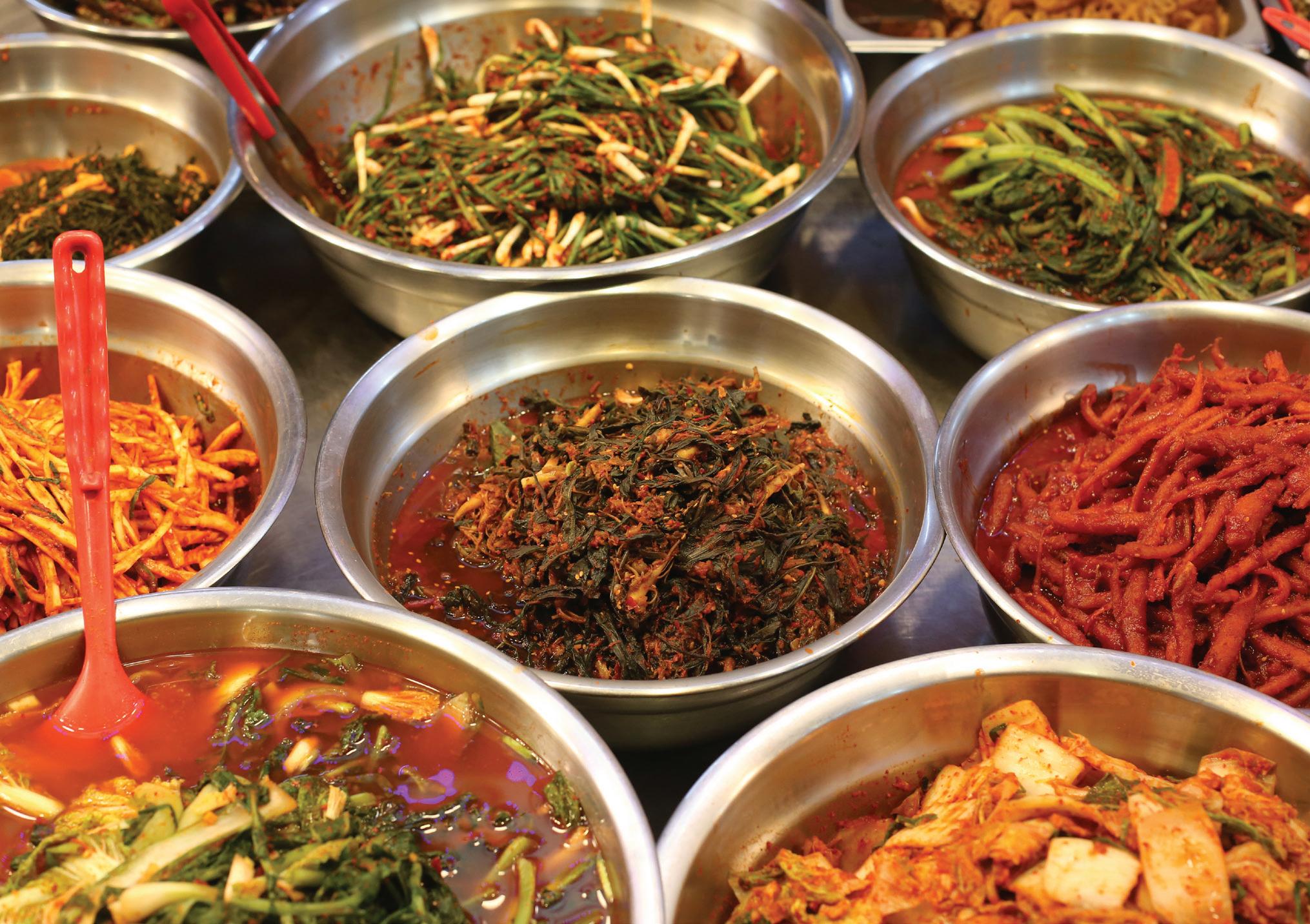
Korean food. They don’t really need to know that a key difference between gimbap and futomaki is how the rice is seasoned, just like they don’t have to know that perilla and shiso aren’t the same thing or why doenjang and miso are different. They don’t even have to grasp the full history and why it makes many Koreans deeply irritated to hear Korean foods labeled as the Korean versions of Japanese things. They do, however, have to respect it.
Earlier in 2022, Lee hosted a pop-up with chef Jiyeon Lee in Atlanta, a seated tasting menu inspired by Korean royal cuisine.
“The way chef Jiyeon described why she was doing the pop-up was that—royal cuisine is respect,” she says. “The cuisine itself symbolizes respect to the king, and it’s respect to the guests. And that was her main message. We wanted to show grace and respect in the dishes.”
Park brings that same mentality into her modern Korean American food.
“For me, Korean food is all about jeongseong,” she says. “Like, guests are not going to know, but it’s all about jeongseong. And being patient.”
Jeongseong is a difficult word to translate pithily; it means sincerity, genuineness, a heart-felt emotion that runs deep and exhibits in care. Korean food is a labor of love, food that takes time and attention—kimchi is a laborious process that takes at least two days, jangs take months to ferment, gimbap requires you to make each individual filling before rolling everything in rice and gim.
And maybe it’s that heart that’s been the through line in Korean food, from royal cuisine centuries ago to the jipbahp of the postwar to the Korean American food we’re seeing today—that, even though so much trauma and violence was wrought upon Korea over the 19th century, Korean food has retained this care, even as the food itself has continued to evolve in both Korea and the diaspora. There is a reason the question Koreans ask to express love is, “Have you eaten?”
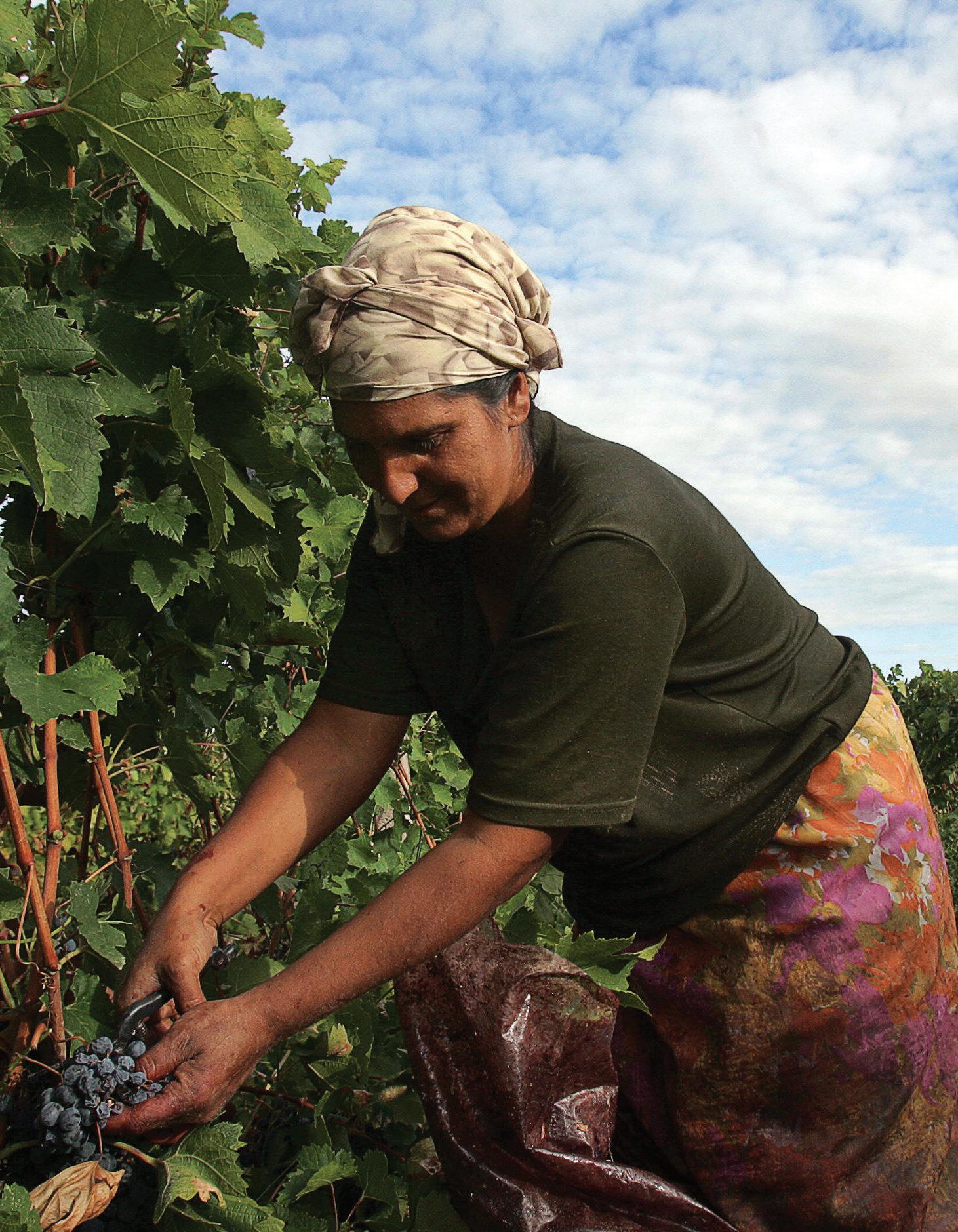
The idea of Balkan cuisine brings up questions around what a nation is and who is considered ‘other.’
TEXT Irina Janakievska
“ Violence was, indeed, all I knew of the Balkans.” writes Dame Rebecca West in Black Lamb and Grey Falcon (1941), her magnum opus on the history and culture of Yugoslavia.
Violence and instability are what many still associate with the region. From their designation as the European powder keg that sparks world wars through to the fragmentation of former Yugoslavia, the Balkans have long been the object of such derogatory stereotyping. The effect of this has been to overshadow their beautiful cuisine.
Delineating the Balkans is complicated. Although the name has become an increasingly recognized form of academic reference, to date there is no real geographical, historical or political consensus where the borders of the Balkan Peninsula or the Balkans lie, and no real consensus as to which nation-states, or peoples, are included in the undefined and potentially indefinable contours of the Balkans.
Even the etymology of the word “Balkan” is convoluted. The conceptualization of a specific Balkan region emerged within the Ottoman Empire at the turn of the 19th century.
The term was an Ottoman Turkish word for a wooded mountain range, referring to what are now known as the Balkan Mountains, but then known by locals in Slavic as Stara Planina (Old Mountain), among other names.
It is possible the Ottoman Turkish word has a Farsi root— bālkāneh or bālākhāna (high, above or proud house). NonOttoman sources used the term Haemus (or Aemus, or other variants) for the same mountain range, derived from an ancient Thracian term for mountain ridge.
In (perhaps overly, perhaps necessarily) simplistic and practical terms, though, the Balkans are in Southeastern Europe. They lie between the Adriatic Sea in the northwest, the Black Sea in the northeast, the Turkish Straits in the east, the Aegean Sea in the south and the Ionian Sea in the southwest. The land border is thought to extend along the Julian Alps and run, from Vienna, along the Danube River.
So, thinking in current global map terms, they comprise nation-states born out of the demise of the former Yugoslavia—Serbia, Croatia, Slovenia, Bosnia and Herzegovina, North Macedonia, Montenegro and Kosovo—as well as Albania, Bulgaria, mainland Greece and parts of Romania, Hungary and Turkey.
These are ancient lands where Europe meets Asia; they have been both the birthplace of civilizations and the thoroughfares of empires, the latest being the AustroHungarian and Ottoman Empires. A constellation of events

in the late 19th and early 20th century sealed the perception of the region as anarchic, violent and uncivilized.
The waning power of the House of Habsburg and the House of Osmanli created a power vacuum, an environment rife for the emergence of new nation-states, Serbia, Greece and Bulgaria, as well as irredentist movements, each of which pursued policies of extending its power and influence in the region through any means necessary, including military force both against the fading empires and each other.
The First Balkan War broke out in October 1912, when Montenegro declared war on the Ottoman Empire and an alliance between Serbia, Greece and Bulgaria saw the expulsion of the Ottoman Empire from Macedonia and Thrace.
This was soon followed by the Second Balkan War in June 1913: Bulgaria attacked Serbia, which in turn allied with Greece, and the strategically and economically important historic region of Macedonia (including the port of Thessaloniki) was carved up between Serbia and Greece under the Treaty of Bucharest, Misha Glenny writes in The Balkans: Nationalism, War and the Great Powers 1804–2012 (2012).
Events culminated with the assassination of Archduke Franz Ferdinand in Sarajevo in June 1914 which in turn was perceived as the trigger for global calamity—the outbreak of the First World War, imperial collapse and socialist revolution, Glenny writes.
In The World Crisis, 1911–1918 (2005), Winston Churchill wrote of an alleged statement by the German Chancellor Otto von Bismarck describing Europe as the powder-keg and warning that the next European war would be set off by some “damned foolish thing in the Balkans.”
The Balkans became Europe’s powder keg.
The region had often served as the “other” within Europe, Maria Todorova posits in Imagining the Balkans (1997). She coined the term “Balkanism,” a concept situated within ongoing theoretical debates in relation to orientalism and post-colonialism.
Unlike the imagined “Orient,” the imagined Balkans were relatively precise in geographical terms, they were European, there was no experience of a real colonial past, the population was considered white and (around 1900) much of the population was Christian. They served as a repository of negative characteristics upon which a positive and self-congratulatory image of the European
had been built, Dr. Hannes Grandes suggests in a review of Todorova’s book for Reviews in History . The Balkans were imagined—that is, conceptualized—as the European cultural other.
This stigmatization gathered momentum throughout the 20th century and was reignited with the dissolution of Yugoslavia in the 1990s. Although the Yugoslav wars did not embroil the entire region in conflict, “persistent use of ‘Balkan’ for the Yugoslav war[s]…re-kindled old stereotypes and licensed indiscriminate generalisations about the region,” Todorova writes. The Balkans, once again, became synonymous with instability, unpredictability and violence.
What does all of this have to do with food? Everything.
Food can become the manifestation of rivalries, an extension of the imperialist imperative to dominate, extend influence and reinforce the myth of the nation-state. A means of creating the “other.”
For me, the central theme that runs throughout the history of the Balkans is the emancipation of nations from empires and establishment of nation-states as distinct from nations. A nation-state does not necessarily encompass the extent of an imagined nation based on ethnic, linguistic, religious, cultural, geographical, historical or other myths, but it can still give rise to another phenomenon of nationalism: irredentism.
This requires the liberation and reunification of any part of a nation left outside the current borders of a nationstate. An irredentist would therefore seek to dominate or eliminate an “other” through the acquisition of or claims over territory deemed to form part of the relevant nation, and to subsume it within the existing nation-state.
Once formed, a nation-state would seek to consolidate the myths upon which it has come into existence and construct a national narrative that would require, to varying degrees, the negation of the past in its entirety or silencing certain aspects that are not compatible with the national ideological framework, and the manufacture of the present.
In culinary terms, this would manifest in, for example, the designation of a national cuisine or a national dish. In a scenario where, let us say, an irredentist was thwarted and the nation-state’s current borders do not match the mythical extent of the nation, does designating a cuisine or a dish as “national” purport to stake an irrefutable
claim over that cuisine or dish? Well, yes, that is generally the intention.
Does it automatically preclude another nation-state from ever having elements of that nation-state’s national cuisine or sharing the same national dish? Clearly not.
Moussaka is a serious contender for one of the national dishes of Greece, but moussaka is made beyond Greece’s borders. It may not always have the iconic French-style béchamel topping adapted by Nikolaos Tselementes, which distinguishes it as Greek moussaka, but variations on the theme of layers of a tomato-based ground meat sauce or sometimes chickpeas interspersed with fried or grilled aubergines, courgettes and/or potatoes are eaten across the Balkans and also called moussaka (musakka in Turkey, messa’aa if you are in Egypt, or musaqa’aa across the rest of the West Asia and North Africa).
Does it denigrate the existence of similar or related cuisines or dishes or stereotype them as derivative? It could, especially if taken in the context of a region’s history and prevailing political climate. Let us take shopska salad, an iconic salad eaten across the Balkans made with chopped tomatoes, cucumbers, onions, sweet long green peppers typical of the region, occasionally parsley, with either a basic red wine vinaigrette or just oil, topped with grated or crumbled sirenje or sir (a brined white cheese, similar to feta).
The name is derived from a mountainous region called Shopluk which transcends the borders of Bulgaria, North Macedonia and Serbia and is inhabited by a separate ethnic group called the Šop or Shopi who are highlanders or mountain shepherds. In composition, it is like Turkey’s Çoban or Choban salad (shepherd’s salad), and it would not take a huge leap of imagination to etymologically go from the words shopluk to choban or vice versa.
Shopska salad is often claimed as the national dish of Bulgaria and much has been written on its Bulgarian nationality, its colors purportedly resembling those of the Bulgarian flag. Yet, it is eaten across the Balkans and called the same name.
On the face of it, calling shopska salad Bulgarian seems harmless. In reality, this is a modern iteration of a historical issue: the Macedonian question, part of which is Bulgaria’s claim over the historic region of Macedonia. That, along with Greece and Serbia asserting ownership of the area, prohibited the creation of a Macedonian nation-state at the start of the 20th century.
It is also indicative of the current political tensions between Bulgaria and North Macedonia—specifically, Bulgaria blocking North Macedonia’s European Union accession process until it accepts Bulgaria’s claim that Macedonian identity and language are of Bulgarian origin, according to “Bulgarian PM Optimistic About Resolving North Macedonia Dispute,” a March 29 article Sinisa Jakov Marusic wrote for Balkan Insight. Claiming the national identity of a simple salad then becomes a symptom of the assertion of dominance of one national identity over, or to the exclusion of, another.
There are similar ongoing debates on the nationality of ajvar, a vegetable preserve made either with justroasted red peppers (like in Leskovac in Serbia) or with roasted red peppers from Strumica and aubergines (in North Macedonia). The reality is that ajvar, and countless variations of it, are eaten across the Balkans.
And let’s not forget sarma, a dish that truly transcends borders and, in the Balkans, has become a combination of the Levantine penchant for wrapping things in leaves and local customs, ingredients and a love of fermentation.
There is a winter sarma made with lacto-fermented (sour) cabbage leaves—the meat version filled with ground meat (beef or pork), rice, herbs and paprika and flavored often with smoked meat, the meat-free (posna) version filled with just rice, vegetables, herbs and spices. Spring and summer sarmas use any seasonal edible leaves—fresh cabbage, of course, beetroot tops, kohlrabi tops, spinach, chard, sweet dock, young hazelnut leaves, marshmallow leaves and, for me, the ultimate, young vine leaves (lozova sarma or dolma).
Despite the relatively fixed nature of the current borders of Balkan nation-states, ongoing political tensions relating to North Macedonia, Kosovo and Bosnia and Herzegovina notwithstanding, longstanding questions of identity, language, ethnicity, territorial claims and irredentist aspirations can become, directly or obliquely, the object of discussion through food. It is culinary nationalism, or perhaps more dangerously, irredentism. Food is not, and should not be, a nationalist fig leaf.
Admittedly, there are clear benefits to defining or delineating cuisines, dishes or food products along national lines. For example, for existing nation-states, it can serve as a bastion against cultural appropriation. For nation-states denied self-determination or whose very reason for existence is still being challenged on historical, geographical, political, cultural, ethnic, religious, linguistic or other grounds, food becomes a way of preserving

identity—a way of claiming and ensuring the continued psychological, emotional, spiritual (if not geographical) existence of a nation.
Although the concept of a national cuisine, like the nation-state it attaches to, is a myth, it would be remiss to underplay the importance of food in the intricacies of identity—real or imagined.
Food can also be attached to cultural, ethnic or religious groups and this may be more meaningful than a delineation along national or nationalistic lines. Much of our perceived identity as humans is inextricably linked to a place, our roots in the lands we emerge from, the food— bounty from those lands—ensuring our survival, physical, cultural and spiritual.
At a time in our global history of unprecedented migration, forced or voluntary, when so many are uprooted from the land they call home, food becomes the thing that can be uprooted and travel with us, either through a few tomato or pepper seeds smuggled in a suitcase to be replanted or jars of grandma’s homemade wild green fig or quince slatko (spoon-sweet).
Food becomes one of the most effective ways of maintaining a connection to our place of origin and preserving a sense of identity. We can, through food, be at home anywhere in the world. We can, through food, preserve our memories and share an elemental part of ourselves with people we love, so they can experience the flavors preserved in our memories, and understand us and the land we come from.

Food becomes one of the most effective ways of maintaining a connection to our place of origin and preserving a sense of identity. We can, through food, be at home anywhere in the world.
Yet, given the ambiguous-at-best relationship between a nation, a nation-state and region, food—which transcends any modern physical political borders—is inherently antinationalist. The relatively recent emergence of nationstates means that delineating cuisine or dishes along national lines can have the effect of negating history that predates the establishment of the nation-state, thus trivializing the interconnectedness of ancient foodways.
Food remains an artifact that evidences and preserves the past and the underlying foodways that have led to its existence more stubbornly than anything. Consider Turkish manti, little dumplings filled with spiced ground meat, baked then boiled and served on garlicky yogurt with a pul biber infused butter. Now consider mantou (or baozi or jiaozi) made in the ancient imperial Chinese courts.
Consider similar dumplings made by the Uyghur peoples of Northwestern China. Consider buuz eaten across the Mongolian Empire. Then imagine these dumplings being carried across Central Asia and the South Caucasus by Turkic and Mongolian horsemen. Imagine their adaptation to suit the Ottoman palate in the Sultan’s kitchens at Topkapı Palace in Istanbul. Imagine Ottoman soldiers, like their ancestors, taking manti on horseback into the Balkans. Imagine the people of the Balkans taking inspiration from Ottoman manti and making mantije/mantii but adapting them to local customs of breadmaking to create ground meat–filled baked pastry parcels.
Then imagine ravioli-like dumplings filled with ground meat, boiled and either served on or baked with a garlicky yoghurt sauce and topped with a sweet paprika–infused butter but called klepe/kulaci—a fusion of Ottoman manti and Italian filled pasta, made in Bosnia and Herzegovina and parts of Croatia (a region where Ottoman, AustroHungarian and Venetian influences met).
Imagine how food has traveled and acquired its layers, flavors, textures, how it is adapted in moments of inspiration and love by the hands that made it somewhere in the world using ingredients available from their land and inherited cooking techniques and tools. Then consider the ever-present historical threads food carries with it and how connected we are, always.
Now, imagine Balkan cuisine. A concept just as elusive and complicated as the contours of the Balkans; Balkan cuisine is a construction, an invention, in much the same way as national cuisines and national dishes. For a relatively small region, the myriad influences of history, politics, ethnicity, language, religion, landscape and climate have resulted in the development of undeniably unique and diverse culinary practices and traditions. Amalgamating them under the banner of Balkan cuisine, much like any integration implicit in the creation of a national cuisine, can be detrimental because any differences or nuances become less pronounced or simply lost in favor of the greater whole.
But, in the concept’s implicit regionalism lies (some) salvation.
Balkan cuisine is a necessary artifice—a safe space from which to explore and celebrate both the commonality across, and the culinary diversity of, the Balkans without falling prey to the problematic delineation of cuisine along national lines and inadvertently perpetuating nationalist or political agendas.
Identifying as a “food writer, exploring and writing about Balkan cuisine,” by imagining the cuisine of an imagined Balkans, I am undoubtedly guilty of Todorova’s Balkanism. Yet, I am the “other,” writing from within my otherness. As a white European, I am perhaps not an obvious other, but I am the European other. The other on the doorstep of Europe (to borrow a phrase from Tony Blair discussing Kosovo in 1999). The other whose narrative, food or otherwise, has been excluded from, otherwise subordinated in favor of or subsumed by the dominant European narrative.
So, I find myself naturally drawn to and finding commonality with the narratives of other global cultures from around the world that have faced such cultural othering. I find myself, perhaps naïvely, attempting to take ownership of the symbolic othering of the Balkans, to reconfigure the negative perception of them through food and create a counternarrative intended to give a voice to and
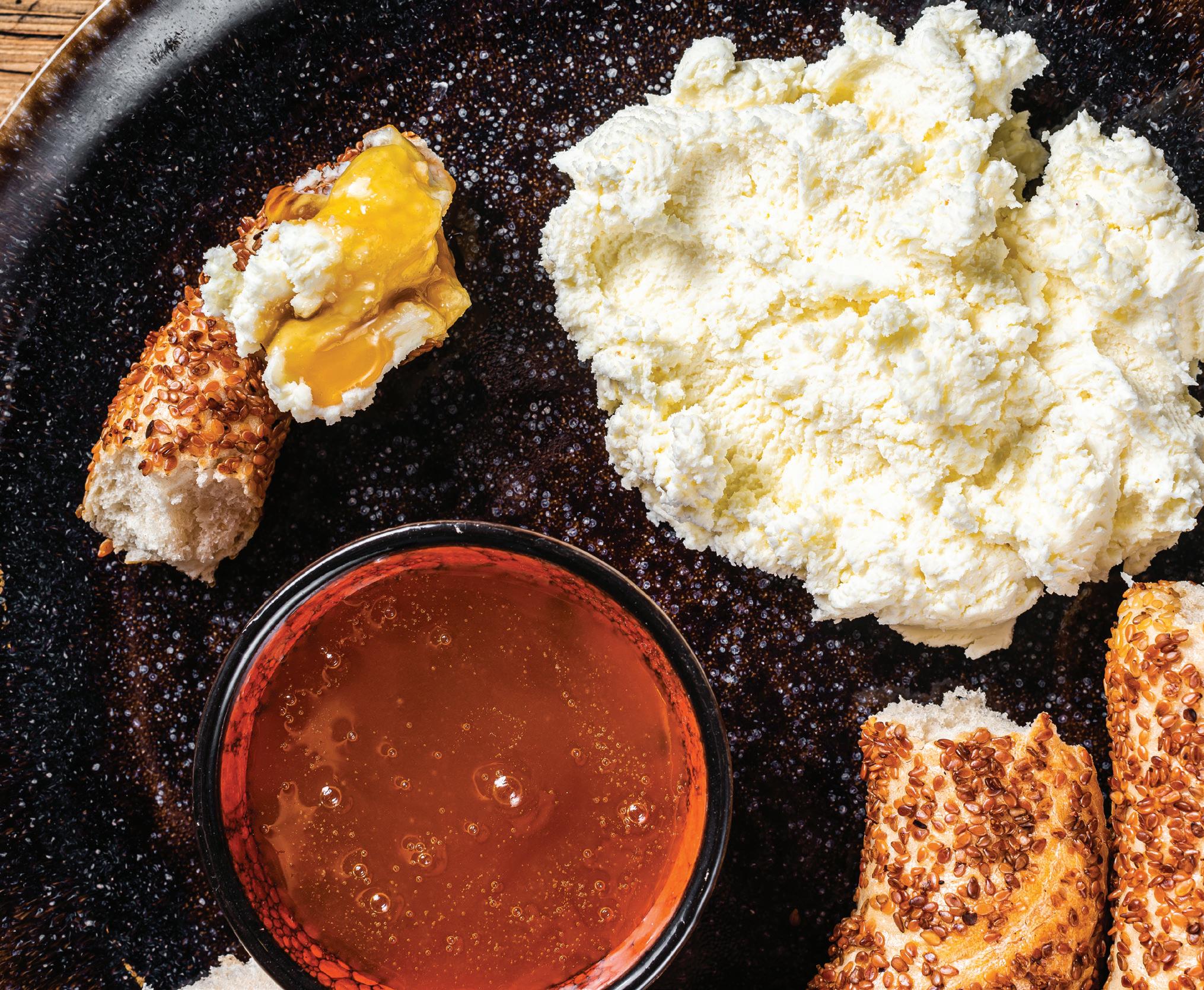
incentivize the discovery of the region’s beautifully unique culinary heritage.
Inherently supranational, the concept of Balkan cuisine can and should transcend the modern political borders of Balkan nation-states and the problems of culinary nationalism. With all the complexities and ambiguities of the Balkans, food, more than anything else, is where the historical, cultural, political, ethnic, religious and geographic narratives overlap. Through food, we can discover and celebrate both similarities and differences. We can better understand and appreciate our common heritage and the intricacies of the region’s culinary traditions, while ensuring the preservation of all cultural and historical layers of identity, despite their difficult historical and political dimensions.
“Balkan cuisine” has, in short, the potential to go some way toward mending ties broken by conflict. It offers a way forward for objectively preserving the culinary practices of the region to avoid them being neglected, destroyed, amalgamated into a national myth, externally appropriated or worst of all, forgotten. It is possible, through a shared love of food, to look past nationality, ethnicity, religions and modern political borders and celebrate the culinary and cultural heritage and history of the Balkan powder-keg.
In the case of the Balkans, that culinary and cultural heritage is the result of an amalgamation of ancient, Indigenous civilizations and empires that have either emerged from or passed through the region. The former’s cooking techniques and ingredients have been impacted by the region’s historical connections with and influences
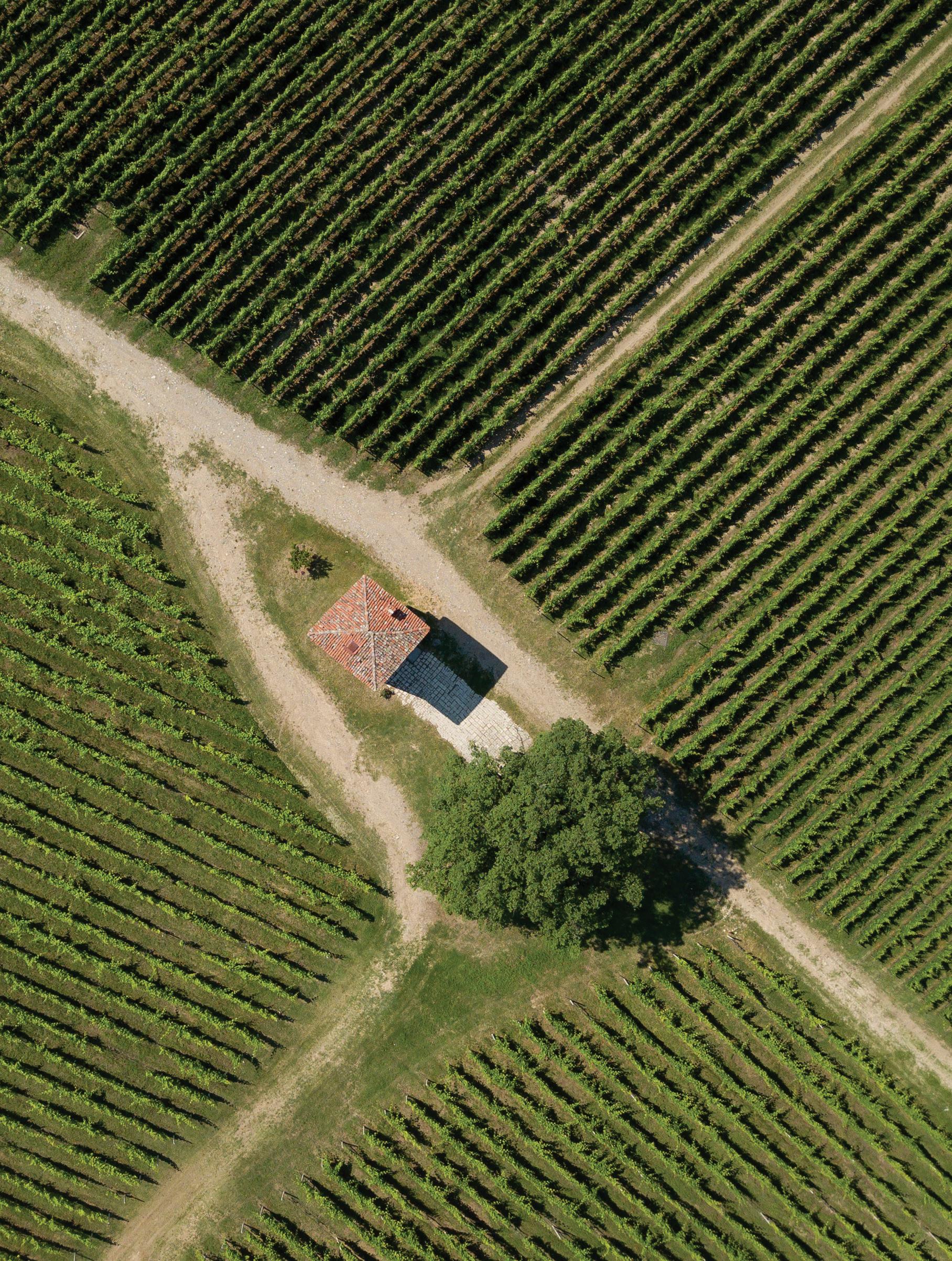
Here, food is all-encompassing, an accompaniment to every important occasion, celebrating life, death and everything in between.

across the world (including Slavic, European, Caucasian, Turkish, Arab, Jewish and Persian). Walnuts, pomegranates, roses and wine were in all likelihood brought to the region (and Europe) by Alexander the Great’s soldiers returning from their conquests.
Balkan cuisine reflects natural conditions across the region, socioeconomic factors, religion. The climate and topography ranges from Mediterranean in the south and along the Adriatic, allowing olives, figs, grapes and many sun-loving fruits to flourish, temperate across the central, rolling arable and forest regions, to extremely harsh and bitterly cold across the rugged mountains and mountain forests.
The same mountains offer not only wild game, but extensive upland grazing, allowing for the production of delicious cheeses, including sirenje or sir made from sheep, cow and goat milk, hard yellow cheeses like kashkaval or fresh whey cheeses like urda, as well as yogurts and other dairy products like kajmak, a salted, preserved clotted cream.
This combination of the Mediterranean, Adriatic and mountain ranges makes for unique terroirs across the region which is particularly suitable for wine production both of international and many indigenous grape varieties including whites such as Temjanika, Žilavka, Smederevka, Moravia, Malvazija, Graševina, Assyriko, Krstac, and reds such as Vranac, Plavac Mali, Crljenak Kaštelanski, Dingač, Prokupac, Teran, Kallmet, Babic, Mavrud, to name a few.
Grain and livestock dominate the vast, fertile Pannonian plains of Vojvodina. Coastal areas are naturally dominated by fruits of the sea, from the brodet (seafood stew) made all along the Adriatic coast, to mussels that are abundant in the depths of the Bay of Kotor, eaten buzara style in Montenegro and Croatia. Inland areas use fish like trout, carp and eels from the lakes (famously Lake Ohrid and Lake Skadar) and rivers of the region’s water systems and, of course, meats, which are cured, grilled, slow roasted or otherwise slow-cooked.
In the southern regions, sunflower oil forms the basis for cooking; in coastal regions, olive oil. As you move inland and north toward Central Europe, lard reigns supreme, but it’s used throughout the region for baked goods, religious affiliation permitting. Some regions are characterized by the production and use of wheat, others by millet, rye, maize, rice or buckwheat.
Breads and grains form the basis of the Balkan diet, supplemented heavily by dairy and fresh fruits and vegetables, though naturally immediate geographic reality has an influence on the local diet, with coastal areas
varying significantly. Lush fruits and vegetables dominate the entirety of the region; they’re eaten seasonally and preserved for winter. Herbs are gathered for cooking as well as medicinal purposes.
Different socioeconomic factors have resulted in a distinction between the food enjoyed in the cities and towns versus more rural areas. Christianity, Islam and Judaism have food uniquely associated with their respective customs and traditions.
The thread that runs through it is a shared culinary ethos and way of life is living off the land respectfully, using all its cultivated and foraged bounty seasonably, wasting nothing. It is a cuisine which is infinitely creative out of necessity—the vestiges of empires, poverty, conflict have created a Balkan cucina povera and created something truly special out of almost nothing.
Humble local ingredients, for example white kidney beans, are turned into an extraordinary number of dishes. Bean salads and dips, soups and stews (grav, grah or pasulj) or slow-cooked then baked (tavče gravče or prebranac), always with a variety of herbs, spices, vegetables and sometimes padded out with a little bit of meat for special feasts.
Here, food is all-encompassing, an accompaniment to every important occasion, celebrating life, death and everything in between. Despite our stigmatization as the “other” and the relegation of the region as the powder-keg of Europe, we are bālkāneh (proud).
Of everything that man erects and builds in his urge for living nothing is in my eyes better and more valuable than bridges. They are more important than houses, more sacred than shrines. Belonging to everyone and being equal to everyone, useful, always built with a sense, on the spot where most human needs are crossing, they are more durable than other buildings and they do not serve for anything secret or bad.
Ivo Andrić writes this in The Bridge on the Drina (1945). It encapsulates perfectly how I feel about Balkan cuisine. It is a bridge that we can use to cross beyond stereotyping the Balkans, to focus instead on the incredible cultural wealth of the region and the beauty of its food.

Filipino food looks radically different today than it would have a century ago. In a country that’s seen so many changing empires, we look at how traditional cuisine is established.
TEXT Mark Corbyn
PHOTOGRAPHY Martin San Diego
Up in the Peak District, the gently picturesque national park in the Midlands of England, you can find the little market town of Bakewell. Composed primarily of tidy Georgian townhouses, it sits prettily on the banks of the Wye, complete with lazing ducks and a medieval bridge spanning its reach.
Every time my wife and I visit the Peak District for our annual hiking trips, we always try to make time to visit the town, to take in the sights and try its culinary delights. If you know English puddings and pastries, the Bakewell name probably rings very familiar, for it is indeed the home of the Bakewell pudding.
As the story goes, the Bakewell pudding originated sometime between 1820 and 1860, when a cook at a local
inn, misunderstanding a strawberry tart recipe, accidentally poured jam into a puff pastry case before the almond custard mix. The resulting pudding was deemed to be a happy accident, and as they say, the rest is history.
The pudding is now a steadfast part of Bakewell’s modern identity, with at least three bakeries and many more cafés and restaurants peddling what each claim is the best version. And by best, they of course mean the one that hews closest to the original recipe. The idea of a Bakewell pudding is set in stone, much like the town itself.
Ask your average Brit, though, about Bakewell puddings and their history, and you might receive a rather nonplussed response. For how often do we all really think about where our favorite foods originate from?
Coincidentally, it was on our return from the Peak District last October, laden with Bakewell puddings, when I came across news from the Philippines of the death of Leticia Hizon, founder of the Pampanga’s Best company. I was vaguely aware of the company, having seen its meat products in the frozen aisle of supermarkets back in the Philippines. I thought it might be interesting to read a bit more about the woman behind it all.
“As the founder of Pampanga’s Best, the inventor of the original Tocino, and as a philanthropist in her community, her contribution to the Philippine economy is immeasurable. Likewise, her influence on Filipino cuisine cannot be overstated,” ran the statement released by her family.
I quite distinctly remember pausing for a good long moment. For someone who thought they knew a lot about tocino—having eaten it for most of my life, and having even developed a recipe for my catering business—that short statement was quite a revelation.
Tocino is a reddish-colored, sweet-cured pork that can be found all over the Philippines and the diaspora. Most Filipinos, certainly those who have attended my pop-ups and supper clubs, have nostalgic memories of enjoying it for breakfast and merienda. It is a hit whenever I have it on my menu.

But was it really invented in the 1960s by Hizon, a schoolteacher? Given its Spanish name, and its appearance bearing a passing likeness to Chinese char siu, I’d always assumed that it had developed during the Spanish colonial period, when the Philippines’ melting pot of Austronesian, Hispanic and Chinese influences really took shape.
Asking some of my friends about it, they had assumed the same. And why would we think otherwise? We’ve been eating it all of our lives, like most of the other Filipino dishes we grew up with; of course we’d think it’s been around forever.
But, as Hizon’s story goes, when her meat vendor neighbor returned home from the market with 5 kilograms of unsold pork, she decided to buy all of it and to cure it so that it wouldn’t go to waste.
However, instead of making the traditional pindang babi or burong babi (Kapampangan for cured pork and fermented pork, respectively), she modified her recipe so that it would be sweeter, softer and less sour. Happy with the result, she borrowed the Spanish word for bacon and christened her version tocino.
So, not really Hispanic, and not really Chinese either, but an evolution of a wholly indigenous dish and technique, one with a very old pedigree. And yet, Hizon had decided to align her product with the Philippines’ Spanish heritage.
It would not have been the first time in the country’s history that happened. I think immediately of arroz caldo. The name is Spanish for rice broth, right? Though originally known as congee or lugaw, i.e. rice porridge, it acquired its Spanish moniker in the 1800s when Filipino-Chinese restaurant owners sought to make the dish sound more respectable in colonial society.
At the time, arroz caldo was an umbrella term for many different types of lugaw. But gradually, versions that shunned offal, prioritized choice cuts of meat and used kasubha (safflower) to mimic the colorings of saffron came to the fore, and gradually “arroz caldo” began to specifically refer to those versions. Nowadays, it is classified as a type in its own right, with its own set of ingredients, and it’s celebrated as a much-loved comfort food.
Lugaw, on the other hand, now has some negative connotations attached to it. One only has to look at the pejorative nickname targeted at Leni Robredo, the unsuccessful contender in the recent presidential elections: Leni Lugaw. In the eyes of her critics, Robredo was weak, watery, bland and unsubstantial—just like lugaw. And when her campaign team started serving the dish at her rallies, in
an attempt to claim ownership of the insult, Robredo was accused of being patronizing to the masses by assuming that the only food they deserved was the poverty staple of lugaw.
I see something similar in the way that tocino has become a beloved breakfast staple, achieving a prominence that far exceeds that of the pindang babi and burong babi that it evolved from. The deliberate choice of tocino as a name not only lent Hizon’s creation a hint of Hispanic prestige, but I feel also made it feel less Kapampangan.
Cut off from its regional roots, tocino could be seen as more of a general Filipino dish, one that could be accepted more readily elsewhere across the country. Indeed, Hizon’s creation proved popular enough that Nora Daza, considered the first celebrity chef of the Philippines, even included a tocino recipe in her Let’s Cook with Nora (published 1965 and updated in 1969) and Galing Galing (1974) books. In her introduction to the first book, she remarked that the recipes within, tocino included, were what she considered “the tastiest, most practical, nutritious, reasonably priced and popular in the Philippines.”
Daza’s books were primarily targeted toward the burgeoning urban middle classes, particularly those based in the capital of Manila and its environs. Having migrated from the provinces for the economic opportunities of the rapidly-growing capital, Daza’s target market was in search of a more cosmopolitan and refined lifestyle, especially when it came to food.
Her recipes are a heady mix of internationally inspired dishes (beef stroganoff, Hawaiian meatballs, Jamaican Banana), aspirational branded creations (Nescafé à la Jetset) and Filipino classics—a potent combination that proved to be extremely successful for Daza. Her inclusion of tocino may very well have helped to popularize the dish and introduced it to a whole new generation of cooks and diners.
Cut off from its regional roots, tocino could be seen as more of a general Filipino dish, one that could be accepted more readily elsewhere across the country.
And, without any introduction to explain its Kapampangan roots or to provide any other context, these cooks could assume tocino to be similar, in terms of background and stature, to the many prestigious Hispanic-influenced fiesta dishes, like kaldereta or chicken relleno or mechado, that Daza so favored.
***
The most common way in which tocino is enjoyed these days is as part of breakfast, and more specifically as part of a silog breakfast. A silog is both a combo dish and a Tagalog portmanteau that combines sinangag (garlic fried rice) and itlog (fried egg) with a protein of choice. So, for example, we have tosilog with tocino, longsilog with longganisa, bangsilog with bangus/milkfish and Spamsilog with, you guessed it, Spam.
A common feature of the proteins favored for a silog is that they feature some form of preservation: drying, curing, fermenting, even canning. Alongside garlic fried rice, which like all fried rices developed a way of using up and refreshing old rice, the meal is a potent symbol of old prerefrigeration foodways. Even the Cebuano word for breakfast, pamahaw, comes from the root word bahaw: old or leftover food.
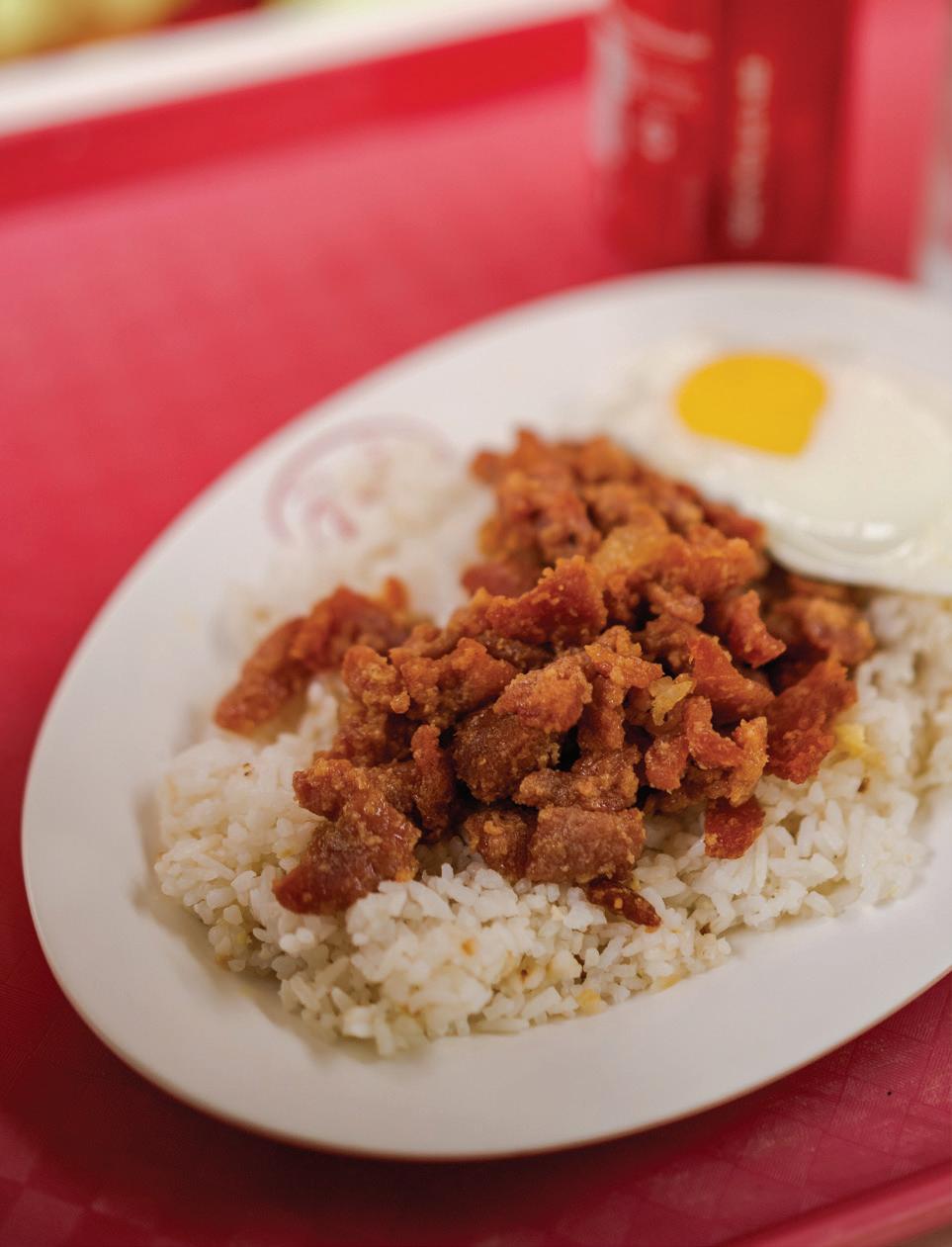
A common feature of the proteins favored for a silog is that they feature some form of preservation: drying, curing, fermenting, even canning.
“This may have started as a time-saver and a wastepreventative,” wrote Dr. Doreen G. Fernandez, the late esteemed food writer, about these sorts of Filipino breakfasts in Tikim: Essays on Philippine Food and Culture. Fernandez recounts youthful pre-World War II treats of sinangag with tapa (cured beef) at the historic Ambos Mundos restaurant in Manila, and she recalls her father’s favorite breakfast of rice, eggs and salted fish. Whatever the protein used, this is a quick and easy meal that provides maximum comfort from minimum effort. Indeed, the first meal my wife and I had when bringing our firstborn back from the hospital was a hearty plate of longsilog.
There is, however, another layer to the story of the silog. In a 2014 interview with ABS-CBN News, Vivian del Rosario, the owner of Tapsi ni Vivian in Metro Manila, talked about the origin of her business in 1986:
Nagtinda din ako ng tapa at mga sinangag. Naisipan ko mag-imbento ng pangalan, ‘yun nga ang sinasabi nilang tapa, sinangag at itlog. Shinortcut ko ng ‘tapsilog.’ Ako ang kaunaunahang nag-imbento ng tapsilog.
(I was selling tapa and other fried things. I thought of inventing a name, because people always said tapa, sinangag and itlog. So I shortened it to ‘tapsilog.’ I was the first to invent tapsilog.)
Thirty-six years on, the silog name is everywhere; some attribute this to the love of Filipinos for turning everything into an abbreviation, acronym, portmanteau or argot. Now, eateries and chains aplenty in the Philippines (including McDonald’s) offer some variation of it, and abroad it has become a marker for the diaspora that can be easily bought into and replicated—no doubt fueled by the fact that frozen bangus, tocino and longganisa proliferate in Filipino shops around the world.
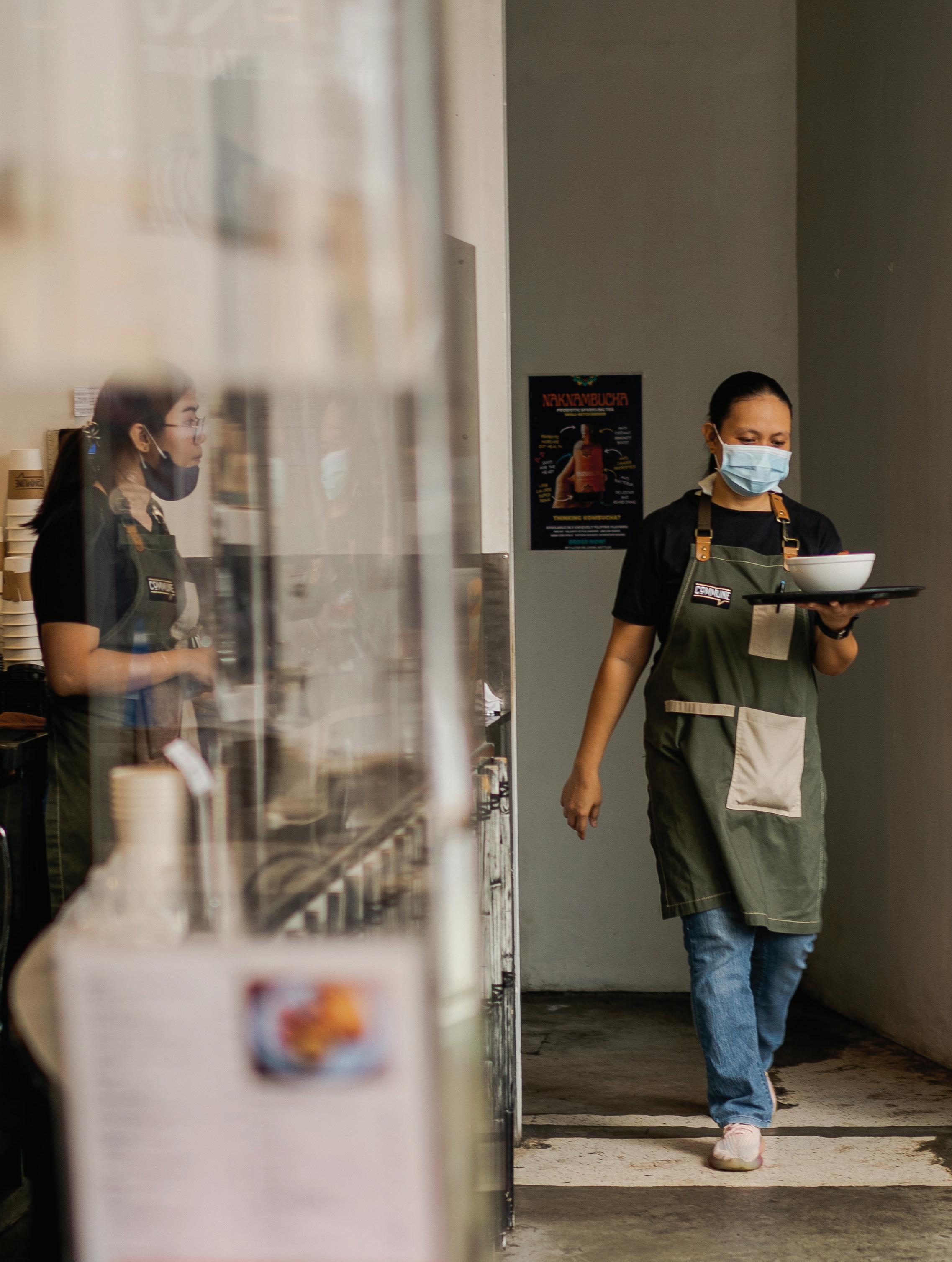

The silog format, now fairly defined as a distinct meal in its own right, has superseded its breakfast predecessor in much the same way that tocino, arroz caldo and countless other dishes have done with their own forebears. And if we extrapolate this to the rest of Filipino food, we can start to get a sense of how this cuisine has shifted and evolved into what it is today: an eclectic mix of Austronesian, Chinese, Hispanic and American influences.
One might be tempted to ask whether, when our dishes evolve, we lose a little something along the way.
Fernandez wrote in Tikim that early in her career, she “lamented the cultural amnesia, the cultural loss” that she saw around her in Manila, where people and the food they ate were increasingly divorced from their original roots.
Were the vendors who developed arroz caldo out of lugaw guilty of this? And the middle classes who cooked from Daza’s book, preferring the more sophisticated sounding tocino over the provincial pindang babi?
How about those of us in the diaspora, cut off from the traditional techniques and ingredients, and unaware of the vastness and variety of our cuisine? Sachets of tamarindbased powder mix, as a stand-in for the many different sour fruits used to provide tang for sinigang; peanut butter in kare kare instead of ground roasted peanuts; ube flavoring in lieu of the actual purple yam.
It’s understandable, of course: Lacking the proper ingredients, either through availability or cost, we have to make do with what we can. How much does this change the dish, though?
When I make bibingka (baked rice batter cakes) with rice flour and baking powder instead of galapong (fermented ground rice), producing a lighter and fluffier product, am I shifting the perception of what bibingka is? When Ferdinand "Budgie" Montoya, owner of Sarap, started selling his famed London lechon, did he establish a new variant of the famous Filipino roast pig? Does diaspora cuisine always become different from that of the homeland?
I, like Montoya and our other contemporaries, am quite happy to make the changes to our dishes to suit our situation. When done with full awareness of where a dish comes from and how it has been made in the past, such changes can be extremely powerful in helping us to take dishes forward and, importantly, to keeping them relevant. Despite her initial fears about the state of Filipino food in Manila, Fernandez did say that the more she researched and learned about the food that her contemporaries ate, she increasingly came to see that while it may have taken
When done with full awareness of where a dish comes from and how it has been made in the past, such changes can be extremely powerful in helping us to take dishes forward and, importantly, to keeping them relevant.
different forms, it was still in essence our indigenous food, and people kept on coming back to it.
“They are hooked on its flavors, which are ingrained in their consciousness,” she writes.
And in a sense, perhaps that’s what has been happening with Filipino food over the decades, even centuries. The forms may have changed to stay relevant, but the flavors are still there. We eat the dishes that we do because, quite simply, they are still damn delicious. And at the end of the day, is that not what we want from our food?
We can now order Bakewell puddings online for delivery down to London, a pivot driven by the vicissitudes of the Covid-19 pandemic, and a welcome one at that. As much as I like eating them, quite frankly, I think I prefer their modern descendants, the cherry Bakewell slice. Knowing the origin of the Bakewell pudding, though charming and nice, and certainly part of the appeal of going to the town itself, doesn’t really supersede other factors that influence what we eat on a daily basis.
Learning about Leticia Hizon’s and Vivian del Rosario’s stories might make me pause for thought when I next make tosilog, but ultimately I am making that breakfast because my wife and I love eating it.
Food origin stories can be complex, and they can change depending on who’s telling them. With every small adaptation that I and millions of others make to the dishes we eat, the waters will continue to get increasingly muddied. But that shows that the dishes are alive, and if they have a life of their own, then they will continue to grow with and nourish us for many years to come.
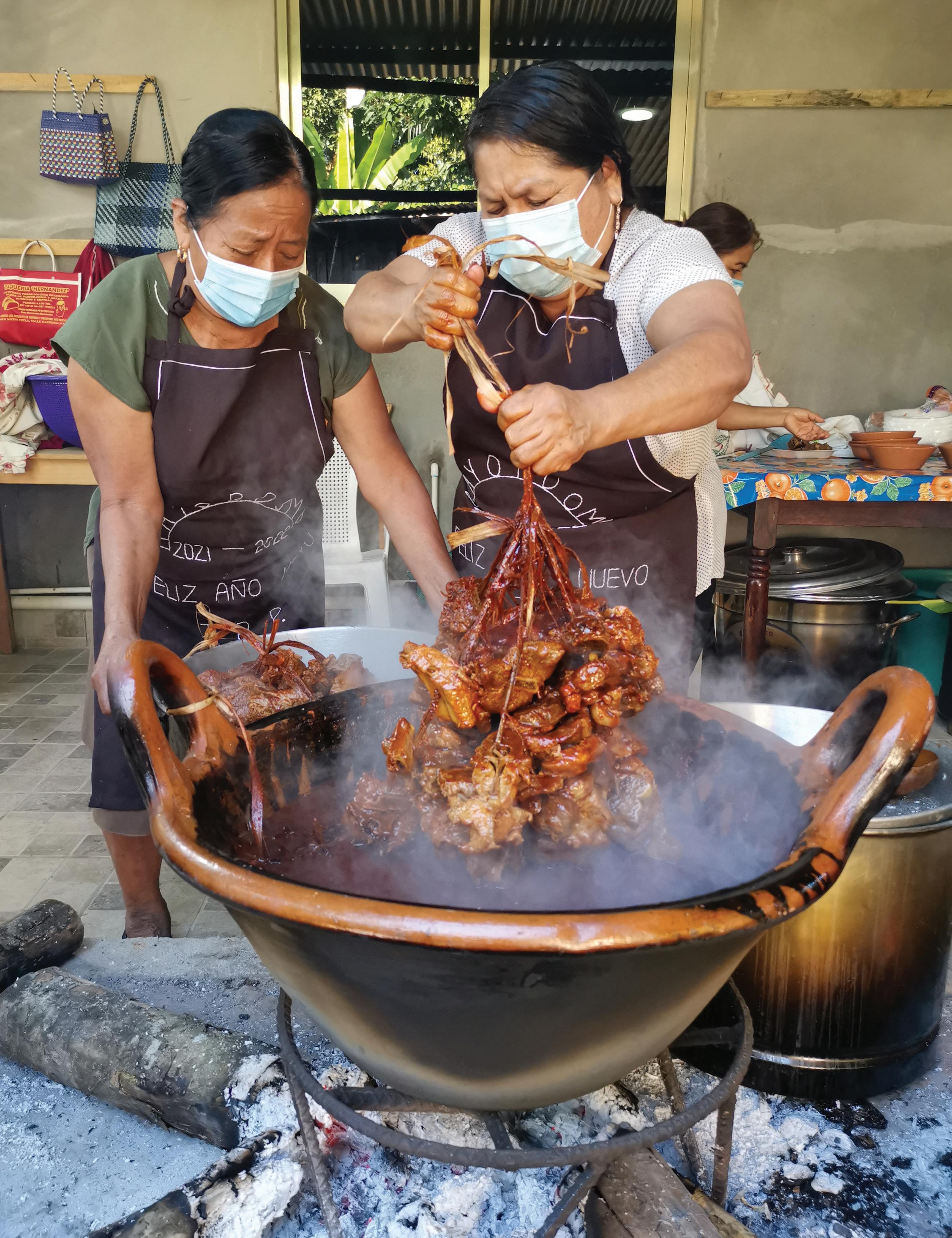
In one Oaxaca town, a three-day process of slaughtering and cooking pigs is essential to an Indigenous changing-of-the-guard event.
TEXT & PHOTOGRAPHY Fabricio González Soriano & Renée Alexander
Four fat pigs lounge in the dappled shade of Isidro Pérez Pérez’s backyard, each tethered to its own tree by a thin rope looped around a back foot. The pigs don't yet know it, but soon they’ll be the stars of the ceremonial soup at the center of San Mateo Yetla’s annual Cambio del Bastón de Mando, or what English speakers might think of as the changing of the guard.
As the outgoing Fiscal, the community’s top political and social authority, Pérez will host a series of events over the next three days, including a ritual pig slaughter, communal cooking and meals, a candlemaking ceremony and a latenight dance party with a live band. The festivities will culminate in a group procession to the local church, where a religious service precedes the official handover of duties to the incoming Fiscal and other community leaders.
Though civic power is transferred administratively each January 1, Yetla’s transfer ritual is mandated locally for January 6. According to some community members, their ancestors prescribed the date to ward off the frequent death of infants, which had devastated the pueblo in a
past so distant that it is lost to memory. Curiously, in the Catholic liturgical calendar, January 6 is also Three Kings’ Day, which alludes to the biblical story of children being hidden from King Herod, who—upon learning of the birth of Jesus—had ordered the killing of all boys in Bethlehem under the age of 2, to prevent the prophesied king of the Jews from taking over his throne. In many parts of Mexico, including this region, Three Kings’ Day is celebrated by baking a loaf of sweet bread with a tiny doll hidden inside.
Though the Mexican government has sought to separate religious and civic life since La Reforma (The Reform) in the 19th century, the codependence among these entities persists in Indigenous and rural communities.
In order to carry out the cambio de bastón on January 6, two days of preparation are required: one to slaughter the pigs for the feast, and another to pour and cool the candles used in the ceremonial transfer of power.
This annual festival offers a clear demonstration of the combination of religious elements, social organization,
Yetla’s festivities feature Caldo Rojo, the deep-red, brothy soup that will be created today as a teambuilding activity for the men and women serving together on cargo committees.
political structure and local gastronomy. It’s one of the biggest parties of the year in this 600-person Indigenous community in Oaxaca’s mountainous Chinantla region, in southern Mexico.
But for 70-year-old Pérez, the retirement celebration is bittersweet. He lost his wife, Esther Antonio Andrés, unexpectedly in November, several weeks shy of the end of his year of service as the town’s top civic official.
Like his predecessors over the past two centuries, he was elected to the ultimate position as Yetla’s Fiscal following decades of service to the community, as he worked his way up through the ranks of a municipal structure known as the cargo system.
Every third year, he took on an unpaid, full-time position: caretaking the community cattle herd, maintaining the church, managing the ecotourism center and organizing community festivities. His final duty upon retirement is to satisfactorily fulfill the Mayordomía requirement by hosting this three-day celebration.
The cargo system lies at the heart of self-governance in semiautonomous regions throughout Southern Mexico.
Under this system, unpaid service is mandatory for each community member, as part of the usos y costumbres (uses and customs) that preserve Indigenous ways of life. Historians mostly agree that the system has been practiced since the 16th century in hundreds of towns and villages throughout Mesoamerica. According to anthropologists Dr. John K. Chance (University of Denver) and Dr. William B. Taylor (University of Virginia), the hierarchical system of ranked offices is, “[o]vertly Spanish in structure, but with some indegenous underpinnings,” and “[a]ll local men are
expected to ascend this ladder of achievement during their lifetimes.”
Although the pueblos participate in—and are officially governed by—the country’s political party system, elected municipal authorities respect and often defer to community-chosen councils of elders who have completed their cargo tenures. For instance, while municipal authorities determine how much money the pueblo will receive from the federal government, local community leaders decide how the money is spent.
The Cambio del Bastón marks the annual rotation of cargo posts, or charges. Each community's festival looks a bit different. Yetla’s festivities feature Caldo Rojo, the deepred, brothy soup that will be created today as a teambuilding activity for the men and women serving together on cargo committees.
Legend has it that Caldo Rojo was central to the community's first Mayordomía del Pueblo, a community celebration that marked the completion of San Mateo Yetla’s church in the 16th century. According to Floriano Garcia Delfín, a 60-year-old native corn farmer and keeper of the community seed bank, church documents verify the date of the church’s completion.
“The truth is I don’t know how long they've been making this recipe, but it has definitely been more than 100 years, surely 200 years,” he says. "My grandparents, who lived to be 90 years old and died 40 years ago, told us about these rituals, which they learned from their parents and grandparents. The food and rituals have been conserved over many generations. The recipe is the same as always. It hasn’t changed.”
As morning breaks on January 4, Don Pérez’s courtyard is arranged for the matanza (slaughter) and preparation of the soup. Four wooden work benches are set out within a perimeter of bamboo poles stretched between trees at head height. Several wood pyres are prepared, with plastic tables set up alongside and covered with tablecloth-sized leaves cut from nearby palm trees. Pots, pans and tools are laid out, and knives are sharpened on pocket-sized whetstones.
A team of four young men from one of the newly appointed departments approaches a pig. Three hold it down while one slides a long, thin knife blade under a front leg to pierce the heart. The animal’s death is neither quick nor


quiet, but it is executed with care and respect. Afterward, the men carry the carcass to one of the wooden benches, where the butchering process begins.
Joined by a few more coworkers of all genders, the team, now numbering eight or 10, works together to bathe the body in soapy water, rinse it clean and shave it bare with knives and razors. Sharing instructions and good-natured banter in Spanish, they drain and collect the blood in buckets. They rub cut-open orange halves over the smooth skin before making quick work of the breakdown.
One by one, the remaining pigs are dispatched and dismembered in the same fashion, each by a different departmental team: communal assets, church maintenance, municipal agency, culture and sports. Within a few hours, hog heads, haunches, rib cages and feet frame the courtyard, dangling from the bamboo perimeter poles.
Now the butchering teams turn their attention to large sheets of skin that have been peeled away from the carcasses. With newly sharpened knives, they score the fat and cut the skin into strips on the wooden benches. The cueritos (pork rinds) are deep-fried in a washing-machinesized metal pot perched over an open fire, surrounded by
team members. Within minutes of removing the pork rinds from the oil and cooling them on the adjacent table, they are piled onto handmade tortillas, topped with jalapeños, and consumed with gusto.
Nearby, a small group of previously retired Fiscales converse quietly in the local Chinantec language around a long table. The elderly men cut the shoulder meat into lime-sized chunks, string them onto thin strips of bark using steel needles, tie the bark strips into loops and hang them from the horizontal bamboo poles.
These are carried across the courtyard to a deep-frying station, where they are slipped gently into enormous metal vats of oil heated over open fires. The wives of previously retired Fiscales direct the frying crew when to remove the carnitas from the oil: once they are crisped on the outside but still pink within.
The men use wooden poles to fish out the loops of meat for transport to a leaf-covered table, where a crew member watches over the cooling meat, keeping flies away.
After bonding over cuerito tacos following the completion of their butchering tasks, the young team members trickle out of the courtyard. The carnitas crew and the women overseeing them remain to finish cooling the meat and to take inventory of ingredients and accompaniments for tomorrow’s Caldo Rojo.
By 9:00 a.m. on January 5, 2021, when the candlemaking ritual begins, a dozen women are already bustling about the outdoor kitchen built into Pérez’s back porch. A similar number of elder men have gathered around a large metal hoop, suspended at head height, parallel to the ground, from a nearby tree. Thirty thick threads of candle wicking dangle from the rim. While the men take turns handpouring multiple layers of melted beeswax up and down the wicks to create tall, tapered candles, a small audience watches quietly, seated in white plastic chairs.
Nearby, Pérez’s 46-year-old daughter, Marcelina Pérez Antonio, attends to the needs of the women overseeing the soupmaking activities. Mostly wives of former Fiscales, they are responsible for ensuring the recipe is followed accurately. Under their direction, two men set metal fire rings over a pair of lumbres (wood fires) burning along the edge of the kitchen. Confirming each one is stable before placing decorated cazuelas atop, they fill both 100-liter clay pots nearly two-thirds full with water.
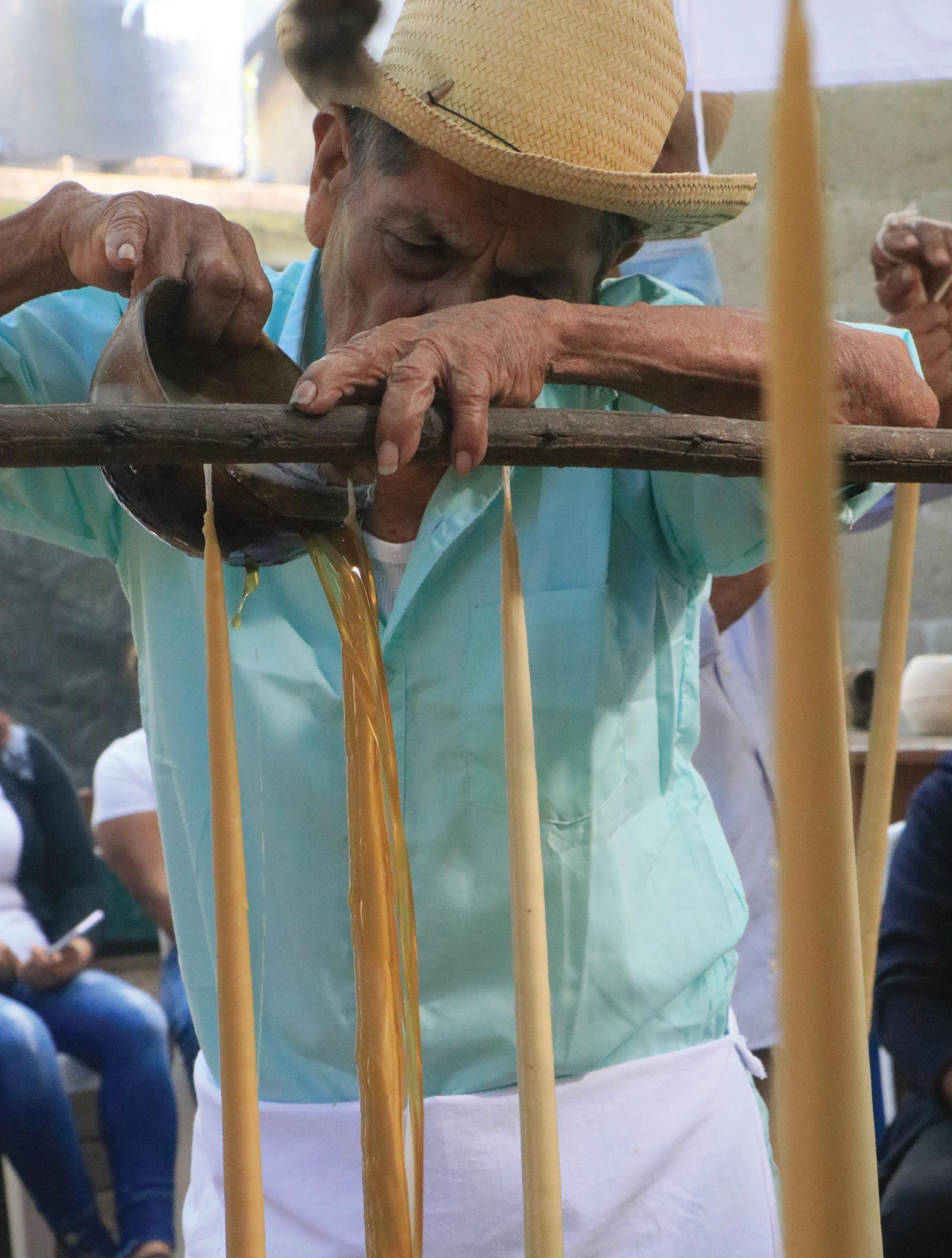

Clad in coordinating “Mayordomo 2022” aprons, the women prepare the seasonings for the broth. Dried ancho and guajillo peppers are roasted, rehydrated in hot water, then puréed in a blender and poured into the broth, tinting it brick red in an instant. A regional mix known as assorted spices—white and black peppercorns, cloves, cumin, bay laurel, cinnamon and tiny red, fiery hot chiles de árbol—is roasted lightly on a griddle, ground in water and added to the cazuelas.
While the water comes to a boil, the women build bouquets of stewing herbs: fresh chives, mint, culantro and Cuban oregano. These are tied with bark strips into bundles, then attached to the handles of each cazuela for easy removal before being submerged in the steaming broth. Once they release their flavor, they are withdrawn.
The pork that was partially fried the day before is added to the pots to complete the cooking process, still strung onto looped bark strips. About three hours later, the women declare it done. Meat is retrieved from the broth, removed from the looped bark strips, and reserved. Rich, red broth is kept warm over the lumbre while the candles cool.
Spectators help set up long tables between the trees while Don Pérez’s replacement, Javier Quirino Francisco, and a few elder men prepare the cooled candles. Using white cloth, they wrap the candles into bunches before carving the bases flat with knives and suspending them from a wooden pole made from the jonote tree.
All attention turns to the candle crew, and Antonio begins to speak, breaking protocol. Normally, the outgoing Fiscal would extend the welcome and appreciation that she is expressing to the community, but Don Peréz has tapped his daughter for the task, apologizing that he speaks little Spanish and “lacks the gift of speech.”
Antonio’s brief comments completed, the Caldo Rojo is served. A few stacks of hot, handmade tortillas the size of dinner plates are placed on each long table, along with bowls of lime wedges and freshly chopped raw onions and multicolored peppers. Women bring individual bowls


of piping hot broth to the tables, each containing two chunks of pork. Young men dole out pony-sized bottles of Victoria beer from plastic crates, popping them open with pocketknives before handing them over with a smile.
Diners squeeze wedges of lime into their bowls, spoon in some onions and peppers, and reach for tortillas, folding them into one hand. These come in handy as eating utensils, for grabbing and pulling apart carnitas and sopping up broth.
The soup is rich, savory, and slightly spicy. The texture is barely viscous; herb flavors provide a velvety sensation that lingers on the tongue. A few women offer seconds from large pots they carry on their rounds among the tables, ladling more broth into bowls as they are emptied.
The crowd eventually thins as people leave to prepare for the evening’s activities. Around 5:00 p.m., a procession of several dozen walk together to the church, accompanied by a marching band. They deliver the candles, stay for Mass and return home to don their finest party clothes for the communitywide dance party. From 9:00 p.m. until 3:00 a.m., live banda music blasts from the municipal building.

Diners squeeze wedges of lime into their bowls, spoon in some onions and peppers, and reach for tortillas, folding them into one hand. These come in handy as eating utensils, for grabbing and pulling apart carnitas and sopping up broth.


Despite a communitywide hangover, most of the town’s residents reconvene at the church just before noon on January 6, the final day of the festival. The ceremonial candles are lit. Every seat is filled, and dozens more stand in the back of the church and outside the open doors. This year, unlike others, the Bishop has come from Tuxtepec to perform Mass. He delivers a heartfelt sermon in Spanish, then steps aside for the official Cambio del Bastón de Mando.
Outgoing and incoming officials are summoned in pairs to the front of the church. The outgoing officials say a few words, then pass a flower-festooned baton to their incoming counterparts, who also make brief comments.
Dons Pérez and Francisco are called last. Each delivers a few words in both Spanish and Chinanteco, describing their ancestral traditions as the lifeblood of the pueblo. The swearing-in ceremony completed, offerings of fruits and vegetables are carried to the altar before the congregation is dismissed.
Now that Don Pérez’s Mayordomía is fulfilled, he can retire, secure in the knowledge that he has successfully completed a lifetime's worth of community service. The three-day celebration cost his family the equivalent of a new sedan, but it is the loss of his wife that burdens him, his daughter and his granddaughter. In fact, the family wanted to abandon the festivities, out of grief.
Community norms prohibited any serious thoughts of canceling such an important event for the pueblo. But what truly drove them to persevere was love and respect for the family matriarch, who had begun the preparations before her sudden demise.
“My mother looked forward to the celebration with joy and pride,” Antonio says. “We wanted to honor her memory by making sure it happened, exactly the way she wanted."
Every trip to Iran feels more important than the last. Before the country’s most recent protests began, I joined my parents in Tehran to visit family. This stay was �illed with visits to the Tajrish Bazaar, taxis that crawled through traf�ic from one aunt’s house to another’s, cooking with my grandma and eating a ton. We took a road trip to see where my grandfathers were born, Kashan and Hossein, and stopped in the historic city of Isfahan. I saw more of the country than I normally do and discovered a rich culture I feel lucky to call my own.
TEXT & PHOTOGRAPHY Shabnam Ferdowsi

My maternal grandparents’ kitchen hasn’t changed in 30 years— the tiles on the wall, the speckled round table, the assortment of breakfast condiments that are always ready for the morning.

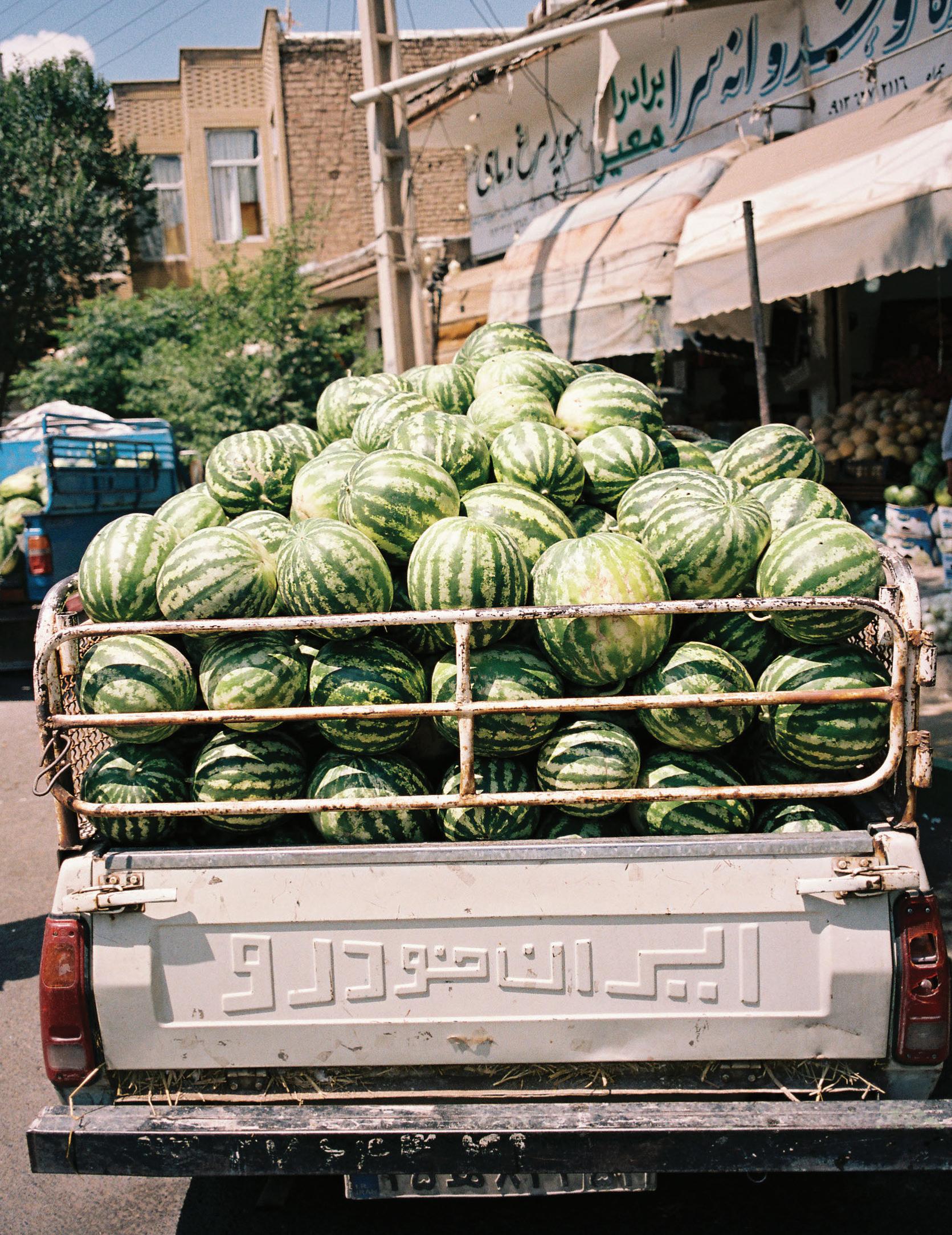

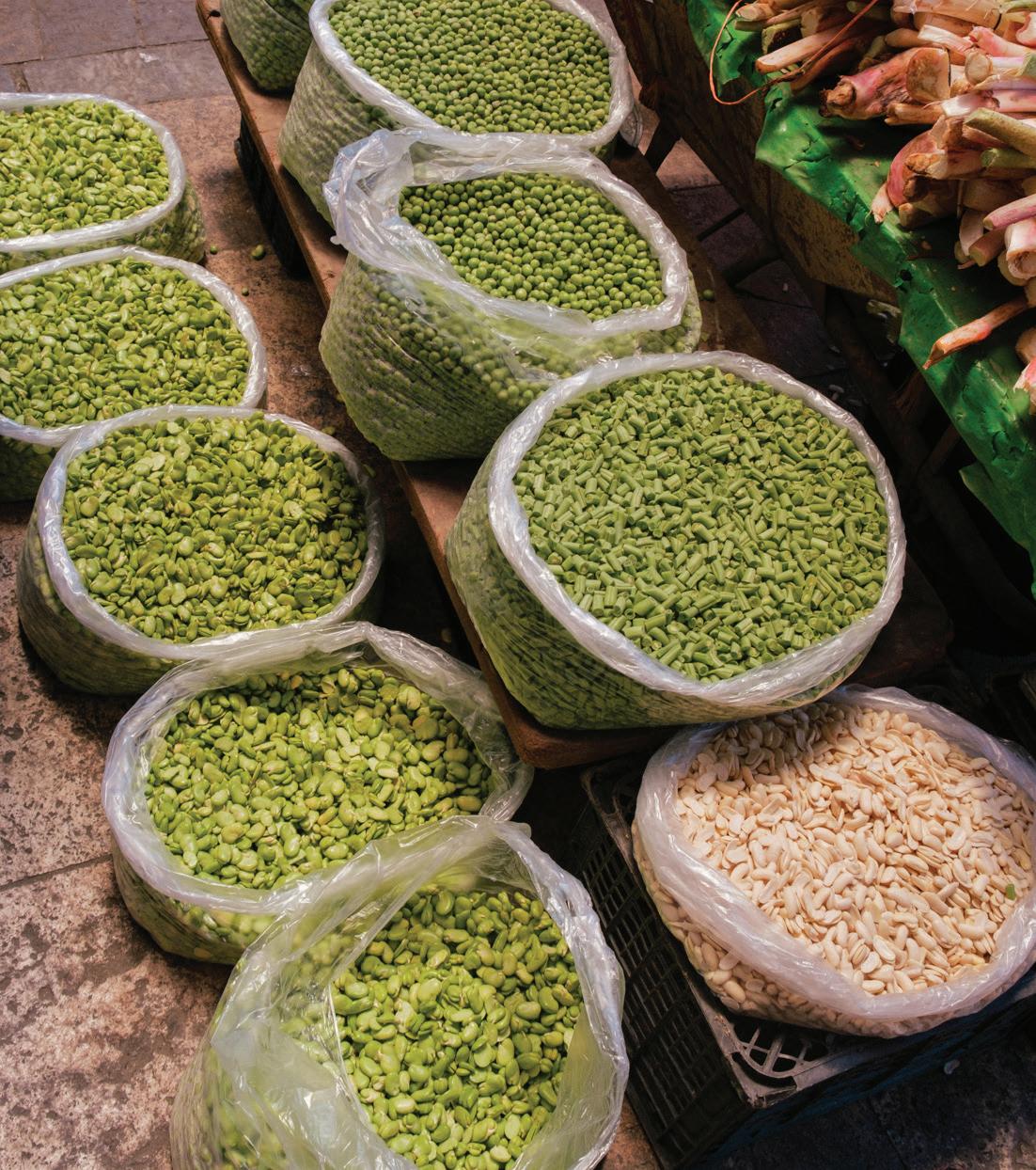

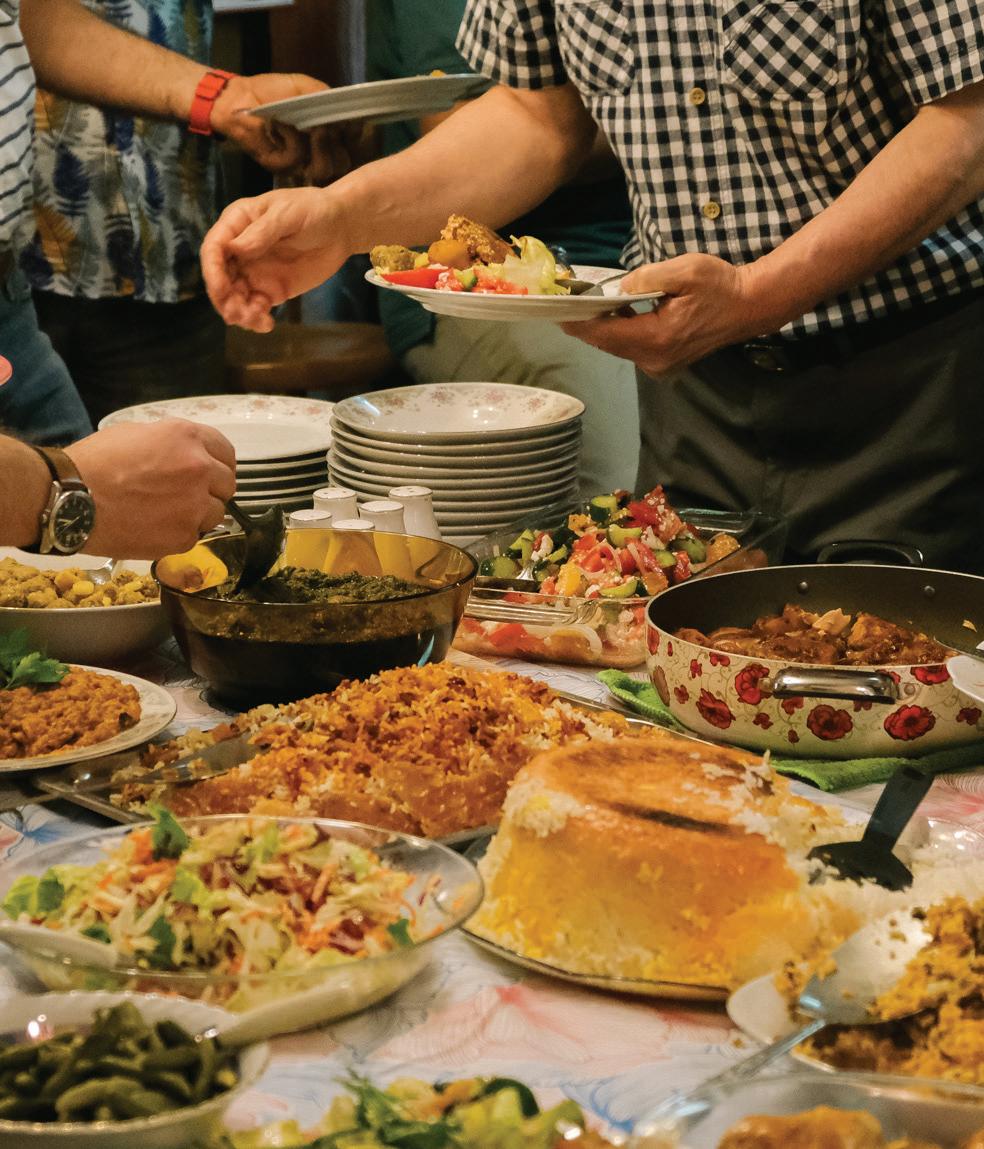
The best way to gather my big family is through a single party, and the best way to make sure we eat well is by making it a potluck. At noon, everyone arrived, and all the women piled into the kitchen to help set the table and toss the salads. Pots were full of stews like ghormeh sabzi or gheymeh, colorful rices with barberries or dill, braised lamb or roasted eggplant.
Picking up fresh, wood-�ired Sangak bread from the local bakery where my dad used to go in the 1970s before he emigrated.




Hossein Abad, a village 45 minutes away from Isfahan, where my dad’s parents grew up before moving to Tehran. On this trip we got in touch with a relative—my fourth cousin with whom I share a great-grandmother—who gave us a tour of the ruins and of the parts still inhabited.

POEM Ojo Taiye ART Dakarai Akil
My mother began with everything; sorghum, pea, meetings and a boycott to plan. While many know the story of Rosa Parks, and how she refused to give up her seat on a bus, the thread of my mother goes so deep that her passion for barbecue is paired with her passion for the civil rights movement. If there was any memory in my childhood, then it was this: Siesta club, literacy test and the notorious march from Selma. This is how come I am involved: I mean to say her activism is entirely exceptional; how they appear in my father’s restaurant with a hand full of banners and fliers, dashing up and down the causeway. Sometimes I’d look up from the kitchen table and there she was, waving at me as she quietly held lessons to teach the other black folks—a kind of community pillar. In the Jim Crow era so many years ago, my mother would say every summer while leaving her usual desk to wander through the old bookshelf; let’s learn how to cook. let’s learn how to vote. let’s go after our own rights so we never have to be treated in a way that we’re not equal to. how unbelievable, those words kept me thinking, then I remember my heritage, how I have to put them on, a history I never heard until I was a man. And now, this fall, in the same old neighborhood, I stand before a real woman. I look into the earth, on the unknown gravestone I tidy each week; an old legacy or nearly so, with its voice charming on the horizon. The wild geese have stopped mid-way in a field, and this my friends, is why my favorite buddha is the last woman on earth—all beyond nice—how her voice rents the air, when she sings along with the children splashing through the puddles, eschewing the burden of injustice—
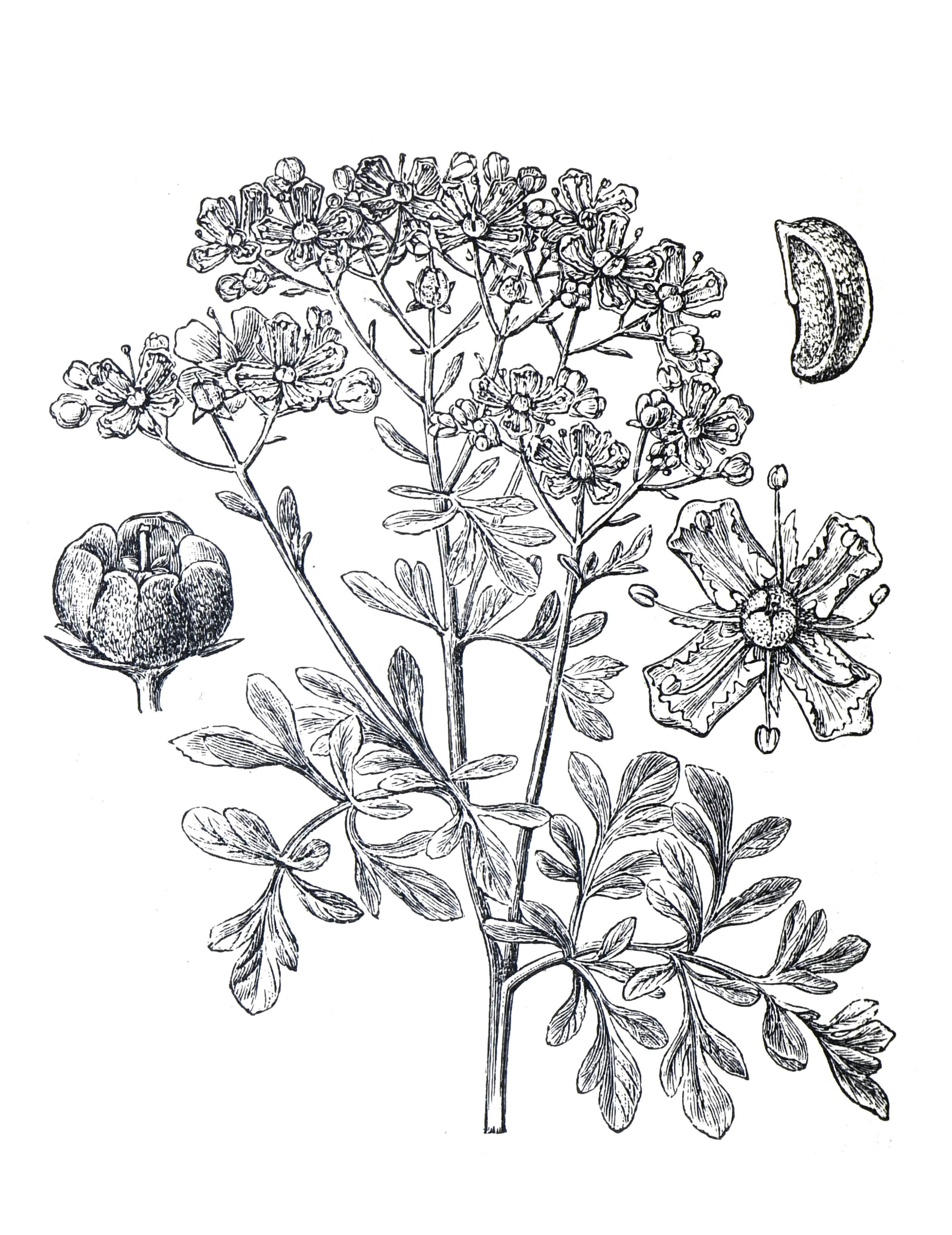
Herbal abortifacients are deeply rooted in American history.
OTEXT
Dr. Julia Fine & Dr. Ashley Buchanan
n June 24, 2022, the Supreme Court of the United States delivered the decision for the court case Dobbs v. Jackson Women’s Health Organization, which effectively struck down abortion as a constitutional right in favor of letting the states regulate it. At the center of this case was a vociferous historical debate
The majority opinion—despite ample evidence to the contrary presented by the American Historical Association and the Organization of American Historians—put it succinctly: “The Court finds that the right to abortion is not deeply rooted in the Nation’s history and tradition.”
A month before the Dobbs decision, lawyers Stephanie Nicole Miller and Dr. Mary Kay Bacallao published an article in the Harvard Journal of Law & Public Policy arguing that “ abortion was overwhelmingly used in the Founding Era to describe a medical misfortune to be prevented if possible,” and thus was not a “deeply rooted” right. Their alleged evidence? A search of the term “procure abortion,” in a historical database, with the intent that the phrase denotes the right or privilege.
As historians of plants and medicine, we have deeper insight. Every day, we comb through evidence in archives and libraries that shows how people in the United States
and around the world used plants and herbs to induce abortions.
Let us state clearly: Historians cannot and do not just search present-day phrases or concepts to make claims about the past; instead, as historians of reproduction and abortion have shown us, claims must be made based on deeply embedded knowledge of how concepts like abortion, pregnancy, fertility and reproduction were understood, experienced and talked about at the time.
We aim to uncover these past understandings and explore how knowledge about abortion and reproductive control actually spread. By tracing herbal traditions from antiquity to the early modern British Isles to the plantations of the antebellum Americas, we see how communities have long used plants to exercise choice over fertility, reproduction and pregnancy.
In the early modern world—often defined as the period between 1450 and 1750—the word “abortion” was used differently than in our current era. Prior to the quickening, the loss (either natural or induced) of a potential fetus was rarely called an abortion because the quickening, or the first sensation of fetal movement around 16 to 20 weeks, was the point at which someone could confirm they were, indeed, pregnant. While then, as now, a missed period was often the first sign of pregnancy, it was difficult to verify pregnancy prior to the quickening.
Of course, there were many reasons why irregular menstruation patterns may have occurred, including poor nutrition and excessive labor, among many others. This meant that menstruators had about three to five months to decide if they wanted to restore their period and end a possible pregnancy by taking an herb that would provoke their “courses.”
People in early modern Europe aimed to control their menstrual cycle with plants. Knowledge of how to “draw the menses down” and give rise to a period was passed from person to person, often by local midwives and wise women. In the early modern world, using herbs to terminate an early pregnancy was not only socially permissible, but also legal. Neither early modern religion nor law in Europe characterized the fetus as a full person. And, in this historical context, it was the pregnant person who determined and declared when a fetus became viable.
As the testimony to whether or not a pregnancy was viable, the quickening was also tied to ideas about the soul. By and large people in early modern Europe viewed a prequickened fetus as “unformed” and a quickened fetus as formed and having a human soul.
Even more than today, a fetus that died in utero could cause infections and immense blood loss, thus posing a grave threat. Early modern sources at times give recipes instructing on how to abort a “dead fetus” as well as expel afterbirth.
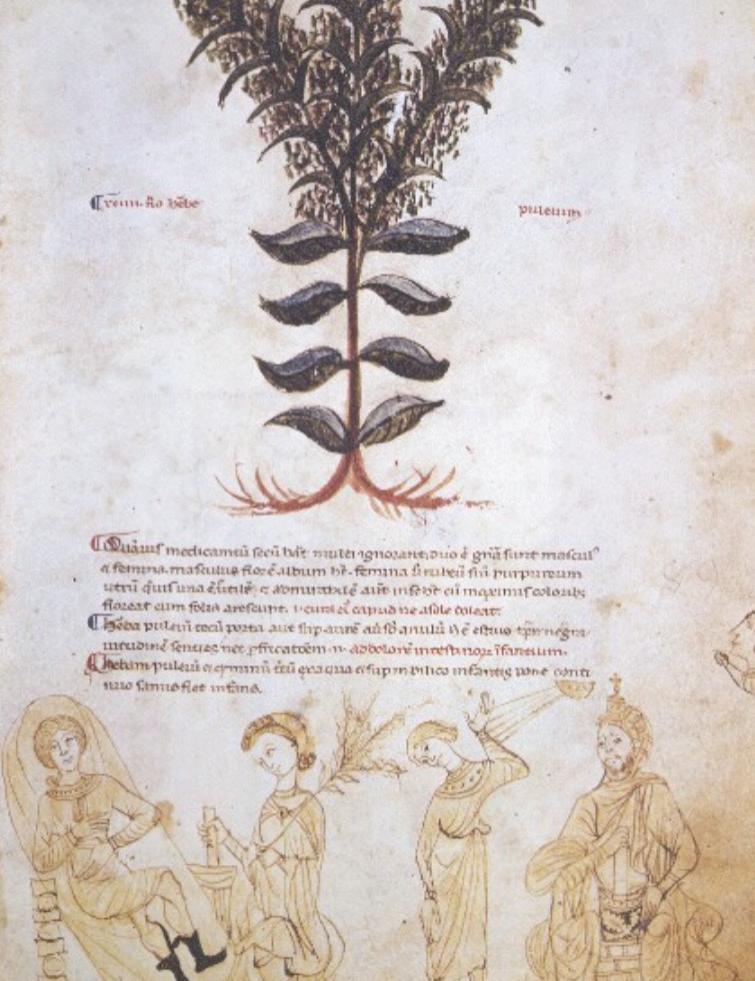
If you expand the search parameters from the one word “abortion” to phrases associated with provoking and staying menstruation as well as purging a womb, suddenly the early modern record is far from silent on this topic. Early modern herbals, recipes and botanical literature are chock-full of examples of plants used as abortifacients and to control reproduction.
In 1640, John Parkinson made a bold claim about Mentha pulegium , or common pennyroyal. While the famous English botanist described all the plants featured in his formative herbal Theatrum Botanicum in-depth, for pennyroyal he notes that will not be necessary.
“This common Penny-royall,” he writes, “is so well knowne to all, that I shall not need to spend much time in the description of it.”
Parkinson was probably right that his audience would need no explanation of common pennyroyal. He was writing an herbal, a genre that emerged by the beginning of the Medieval era in which the works of classical authors such as Pliny and Dioscorides were collected and reproduced.
Today, we define herbals as a family of related books produced by naturalists, physicians and early botanists that identify and explain the medicinal virtues of various plants.
As a genre, herbals were also highly interconnected. Authors routinely cited one another, commented on or translated previously published herbals, synthesizing information on plant nomenclature, origin and botanical lore in the process.
It is in this tradition that Parkinson’s claim about pennyroyal’s acclaim is situated. As early as the 4th century, herbals discussed pennyroyal as an effective abortifacient.
In one 13th-century copy of a 4th-century herbal, a monk added a telling illustration to pennyroyal's entry. It depicts a woman reclining, pointedly clutching her stomach, while another woman holds a sprig of pennyroyal in one hand and grips a pestle and mortar in the other, ostensibly preparing the plant as an abortifacient.
Three centuries later, in the 16th century, pennyroyal could be found in nearly all of the popular herbals, with many highlighting its role as both an abortifacient and an emmenagogue, or provoker of menstruation.
“Penny Royal boiled in wine, and dronken, provoketh the monethly termes, bringeth forth the secondine [afterbirth], the dead fruite [dead fetuses], and the unnaturall birth,” states a 1586 English translation of Dr. Rembert Dodoens’ influential herbal.
Of course, pennyroyal was not the only known or documented plant used to end an early pregnancy. Dr. Nicolas Culpeper's London Dispensatory lists pennyroyal as flowers that “provoke the terms,” alongside several other well-known abortifacients such as mugwort, angelica and rue.
John Gerard’s popular 16th-century herbal describes “sowbreade,” a common wildflower, as “a strong medicine to destroie the birth, being put up as a pessarie.” He also cites a type of iris as having “great effect, being put in a broth or taken in fumes through a close stoole, to provoke womens natural accidents,” and instructs using stinking gladdon in a pessary, a type of vaginal suppository, “to provoke the termes, and to cause abortion.”
While early modern herbals, particularly those written in classical languages, were used by erudite men, the popularity and proliferation of non-Latin herbals increased
substantially over the course of the 16th and 17th centuries with developments in printing technology.
And, works like those by Parkinson, Culpeper and Gerard— intended to unlock the secrets of learned medicine for the layperson—became a staple in many English and American households. Elite and middle-class women actively read these vernacular herbals in order to have the necessary medical knowledge “to fulfill their Christian duties as wives, mothers, and caregivers, both within the home and the community,” as Ashley Buchanan (one of this article’s authors) wrote in a September 2020 JSTOR Daily article titled, “Plant of the Month: Dittany.” These women also passed their herbals down through generations.
A work like Parkinson’s, which highlights pennyroyal familiarity, also illustrates how knowledge surrounding the plant circulated. As he writes, drawing on the work of Dioscorides, the plant “provoketh womens monthly courses, expelleth the dead child and after-birth, and stayeth the disposition to vomit.” Local traditions, often developed by women, spread from place to place as printing technologies increased the number of books published in vernacular languages.

Founding Father Ben Franklin, too, recognized the utility of pennyroyal. In his 1748 book American Instructor , Franklin appended a famous 1734 treatise by Virginian physician John Tennant. One of these recipes, part of a corpus which Franklin deemed “more immediately useful to us Americans,” was for treating “a common Complaint among unmarry’d Women, namely, The Suppression of the Courses.”
The recipe called for purging with belly-ache root three days before drinking “a quarter of a pint of Pennyroyal Water.” Belly-ache root, or angelica, was also frequently cited in early modern herbals as an effective provoker of menstruation. As scholar of American literature Dr. Molly Farrell wrote in the title of her May 2022 piece for Slate, this was a case of Ben Franklin literally putting an abortion recipe in his math textbook.
It may seem odd to focus on an abortion recipe written down, codified and promoted by elite men like Franklin and Parkinson. But the nature of gender structures and power in the early modern world meant that it was elite white men who could afford to be more explicit about abortion, while those actually using these remedies often framed discourse on the matter as a discussion of controlling menstruation.
There were two important reasons for why that is. First of all, while abortion was not illegal, women—unlike men—were expected to remain chaste until marriage. Many avoided writing explicitly about this topic implicitly connected to premarital sex.
But they also saw managing menstruation in a variety of manners as critical to their overall health. For instance, one 1666 manuscript recipe book, written by Rebeckah Winche, instructs the reader on how to make a “potion” with mugwort, pennyroyal and dittany for “purging the wombe from all hurtfull or superfillus humers which hinder conception.” Others, like in an anonymous manuscript for “Pharmaceutical Recipes,” instructed on how to make a “safe & approved medicine to stay their Courses that have them too much.”
For Winch and her peers, abortion was just one possible tool in a long list of strategies to manage reproductive health.
Amid this obfuscation, recipes for abortions proliferated. In one early modern English manuscript, which was likely a family recipe book compiled over several generations in
the 17th and 18th centuries, one of the authors recorded a recipe “For a woman that wanteth her Courses.”
It prescribes “three drams of Hiera Picra,” a commonplace purgative drug composed of aloes and canella, to be mixed with honey to form pills that are then divided and taken for three days before bed. This drug, often referred to in the popular parlance as “Hickry Pickory,” was generally made at home.
Other handwritten recipe books featured numerous abortifacients and references to abortion. One compiled by Thomas Sheppey in the late 17th century featured a recipe titled “Flowers to bring down.” This recipe, credited to “MS,” which meant it came from a “famous” manuscript source, instructs taking “a quart of white wine, the root of a flower de Luce, germander, unsett hysop, and unsett lime, of each a handfull; boyle all these well in the white wine, & drink of it morning and evening.”
The manuscript gives another recipe for provoking menstruation, instructing the reader to consume “gallingale beaten to powder” with white wine, in order to both provoke menstruation and “bring down the afterbirth.”
These are just a few examples in a slew of recipes that demonstrate the way people in the early modern world “sought to understand their bodies and the surrounding natural world within their own homes,” as historian Dr. Elaine Leong has argued. Knowledge about how to procure an abortion spread from woman to woman, from household to household, as recipes were shared, tried out and edited.
But not all recipes were written down, and not all people had access or the need for written knowledge about abortion.
Rather, Black and Indigenous communities in the Americas shared long-tested means of procuring abortions before and then in the context of violent enslavement and settler colonialism. In the latter context, reproductive control was “a part of the colonial struggle of victors against the vanquished and a matter of economy and of state,” as Dr. Londa Schiebinger writes in Plants and Empire: Colonial Bioprospecting in the Atlantic World (2004).
In response to violent sexual practices and efforts of the colonial state to regulate reproduction, enslaved peoples relied on their own abortion practices. It is difficult to
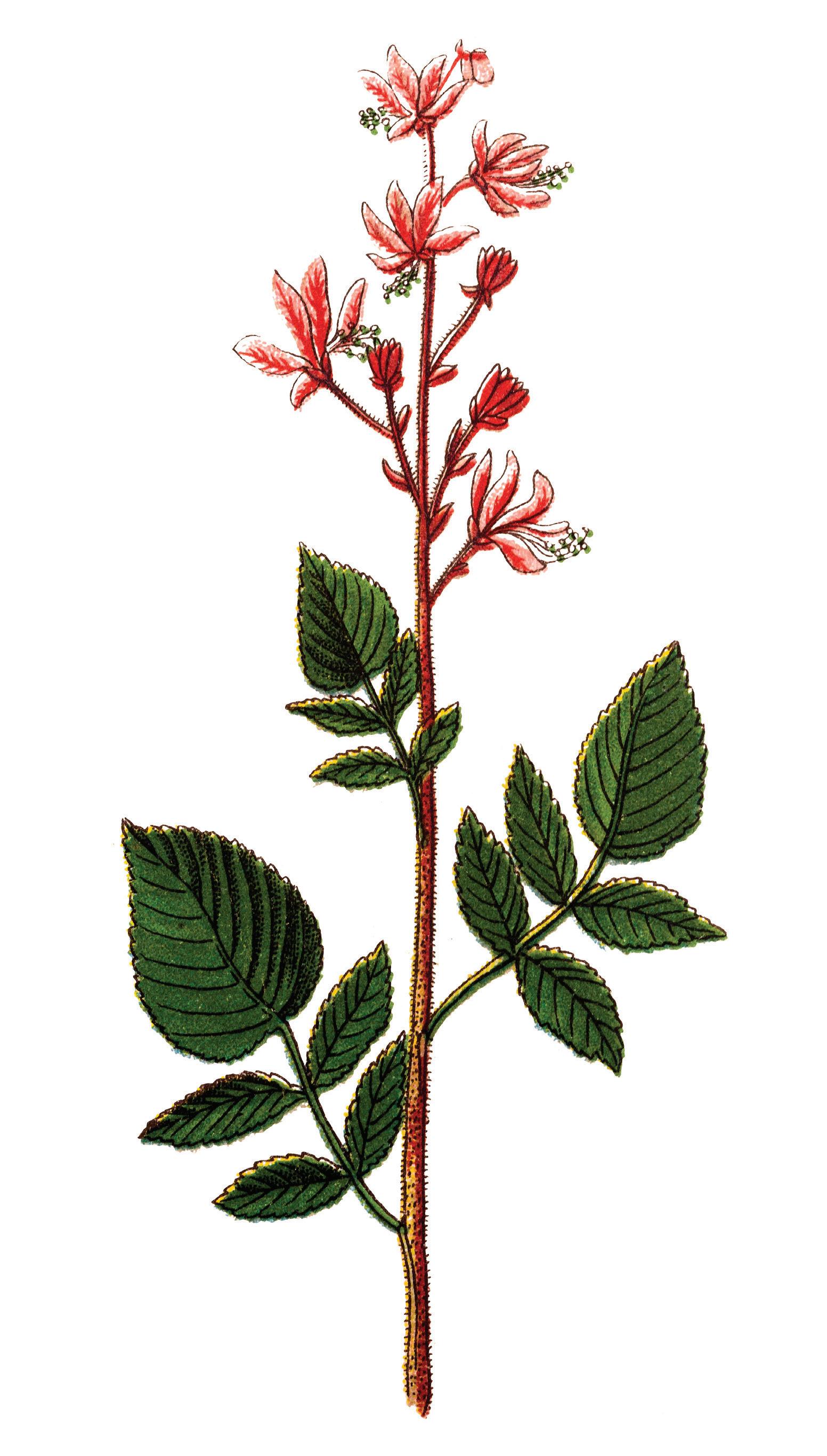
recover these practices with precision: The nature of colonization means that the voices of these communities are almost systematically excluded from colonial archives.
But, if you know where to look for it and how to read against the grain, some written sources shed light upon these practices, which were mainly spread, codified and maintained through networks of oral knowledge.
One source that helps illuminate these practices is the 1705 work Metamorphosis Insectorum Surinamensium . Written by German-born Dutch naturalist Maria Sibylla Merian, the 60 engravings document organisms she observed during her two-year research stint in Suriname.
One of Merian’s most famous engravings is that of the peacock flower, or Flos Pavonis. The passage about the flower is both poignant and chilling:
The Indians who are not treated well when in service with the Dutch, use the seeds [of this plant] to abort their children, not wanting their children to be slaves, like them. The black female slaves from Guinea and Angola have to be treated very kindly. Otherwise they do not want children in their state of slavery and will not have any. Indeed, they sometimes even kill them because of the harsh treatment commonly inflicted on them, because they feel that they will be reborn in a free state in the country of their friends, as I heard from their own lips.
Here, Merian documents the peacock flower as a known abortifacient that, to quote Schiebinger, “responded to two aspects of a distinctive West Indian sexual economy: the pressure on slave women to ‘breed’ themselves to enhance plantation property and wealth; and the pressure on slave women to provide sexual services to planters, soldiers, and sailors in the islands.”
By aborting, Schiebinger writes, “slave women were well aware that they saved their children from a life of servitude since, no matter who the father, the child inherited its mother’s legal standing.”
Abortion, historians remind us, is difficult to quantify or even describe in detail from preserved documents.
“Women who underwent the trials of abortion did so quietly and rarely committed details concerning their experience to writing,” Schiebinger writes, and abortion was “largely female-initiated and beyond physicians’ control.”
But Merian’s passage gestures to the way enslaved communities used plants like the peacock flower to exercise
control over their bodies, no matter how circumscribed that control was by colonial violence.
Merian’s work gives only a glimpse of this rich history of oral knowledge surrounding reproduction. Indeed, this wisdom spread and was redeveloped beyond Suriname, with other European naturalists noting the peacock flower’s usage as an abortifacient in Jamaica and Haiti. And, some communities in the Caribbean continue to use the peacock flower as an abortifacient today.


Through
meticulous historical research, we see how abortion was and remains an essential part of healthcare—and how communities have always worked to spread and preserve knowledge about abortion.
“Evidence suggests that certain older African women were skilled in techniques of midwifery and herbalism [and] carried their skills with them,” writes Barbara BushSlimani in her article “Hard Labour: Women, Childbirth and Resistance in British Caribbean Slave Societies,” for the Autumn 1993 edition of the journal History Workshop . She notes that during the violent Middle Passage to plantations in the Americas, “the formulae for herbal conconctions to induce abortion would have been passed on from mother to daughter.”
Our research has taught us important lessons for discussing abortion in the current moment: Histories cannot simply be reduced to cherry-picked examples or a ctrl+f search.
People in the early modern era preserved information about abortion in a number of ways, only some of which are accessible to us now.
But through meticulous historical research, we see how abortion was and remains an essential part of healthcare— and how communities have always worked to spread and preserve knowledge about abortion.
Despite current attempts to dislodge the history of abortion like a pesky weed, it’s clear that—much like the plants used as abortifacients themselves—abortion was and remains deeply rooted in our histories.

From West Africa to Brazil, selling akara or acarajé has offered people a chance at independence.
TEXT Zahra Simpa
PHOTOGRAPHY Rafaela Araújo

Freedom is a dynamic term. For some, it means wrists free of spiked cuffs. For others, it’s a state of mind free from coercion. Still, most people would agree freedom starts from the mind and soul. Among them are the Baiana women of Bahia in the northeastern region of Brazil.
Their ancestors were taken from their homes in exchange for silvery objects; these enslaved Africans had to survive on offshore meals. They were kidnapped from the western region of Africa, spanning mostly Nigeria, Togo, Mali, Cameroon and Ghana. Shattered and broken at sea, foreigners in a strange land with stringent barricades, they didn’t have a modicum of hope left in the free world.
But sometimes, they had homelike food. Through a meal, the mind explores several continents.
Before the trade of enslaved people was abolished in 1888 in Brazil, Africans were made to work. In order to try to buy their freedom, some sold a fritter snack made from beans for extra change. They also sold sweet snacks like coconut candy, cakes and other treats. Some of the women managed to get free this way. They are often called the first entrepreneurs in Bahia. During the early 19th century, women were officially permitted to sell acarajé from noon till evening.
Acarajé is a symbol of remembrance for AfroBrazilians. No matter how far and forgotten home might be, culture always lies within them.

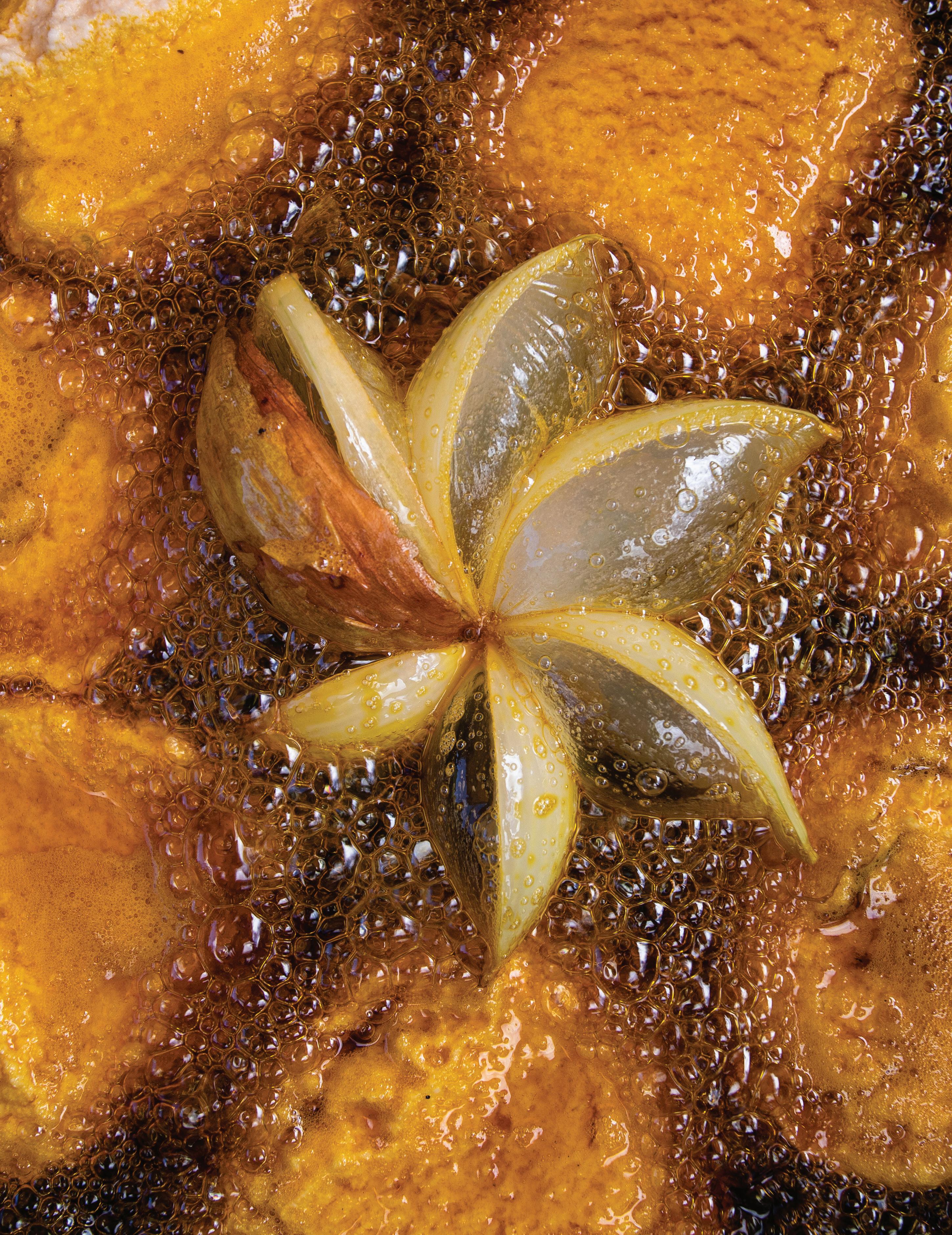
Acarajé has its roots in the Yoruba culture in West Africa. It is called by several names in regions of Nigeria. In the western part of Nigeria, it goes by the name “akara”, in the north it is called “kosai,” and in Europe, it is known as a bean cake. The site of acarajé’s origins is a subject of debate. A few argue that it was introduced by Portuguese enslavers during the colonial era.
The word “acarajé” is linked to the Yoruba people. When split, the word “acara” and “jé” means “come and eat akara.” The word “jé” hastens prospective buyers’ wants.
Due to systematic racism, traces of acarajé and other AfroBrazilians connected were slowly becoming obsolete. But the Baianas women sell this street food wearing white pleated laced shirts, large pleated skirts and colorful headwraps.
“There are a lot of reasons for the white clothing,” says chef Luiz, an award-winning chef who explores his Italian and Brazilian roots, bringing a cultural fusion in every dish.

In 2004, the heritage of the Baianas de acarajé was declared a national relic of Brazil. Afro-Brazilian women have since been gaining worldwide recognition for their craft, culture and culinary traditions.
“The vest was made of cotton, the first and most popular element for producing clothes” he says. “At that time, the [enslaved people] were prohibited from even using clothes; however, the bourgeoise lived always clothing white dresses. It also has a lot to do with the religion Candomblé. The color white means purity, protection and also moral values in their religion. Colored beads are also worn to represent the various divinities of African origin.”
“Brazilian cuisine consists of different origins and cultures,” says Emme Collins, an award-winning chef and victor on Chopped . “Down south, the meals are greatly influenced by European culture while the northeast region is influenced by Portuguese and African descent. Acarajé can be traced to the Yoruba tribe in the western region of Nigeria. Acarajé was also used to appease the gods, Orisha and Osun, in Brazil, similar to the Yorubas in Nigeria.”
In Brazil, the fritters are split and stuffed with shrimp, vegetables, pimenta (spicy pepper sauce), vatapa (a paste made from coconut oil, crushed cashew nuts, peanuts) and caruru (okra stew). It is deep-fried in dendê (palm oil from the fruit of Elais guineensis). The paste is made from grated fradinho beans while black-eyed beans are used in Africa.
In 2004, the heritage of the Baianas de acarajé was declared a national relic of Brazil. Afro-Brazilian women have since been gaining worldwide recognition for their craft, culture and culinary traditions. In 2009, they were accorded space in the historic center of Salvador.
Unknown to many, a Barbie version of the Baiana de acarajè women was produced among the Dolls of the World collection. However, it didn’t sell well due to its expensive prices.
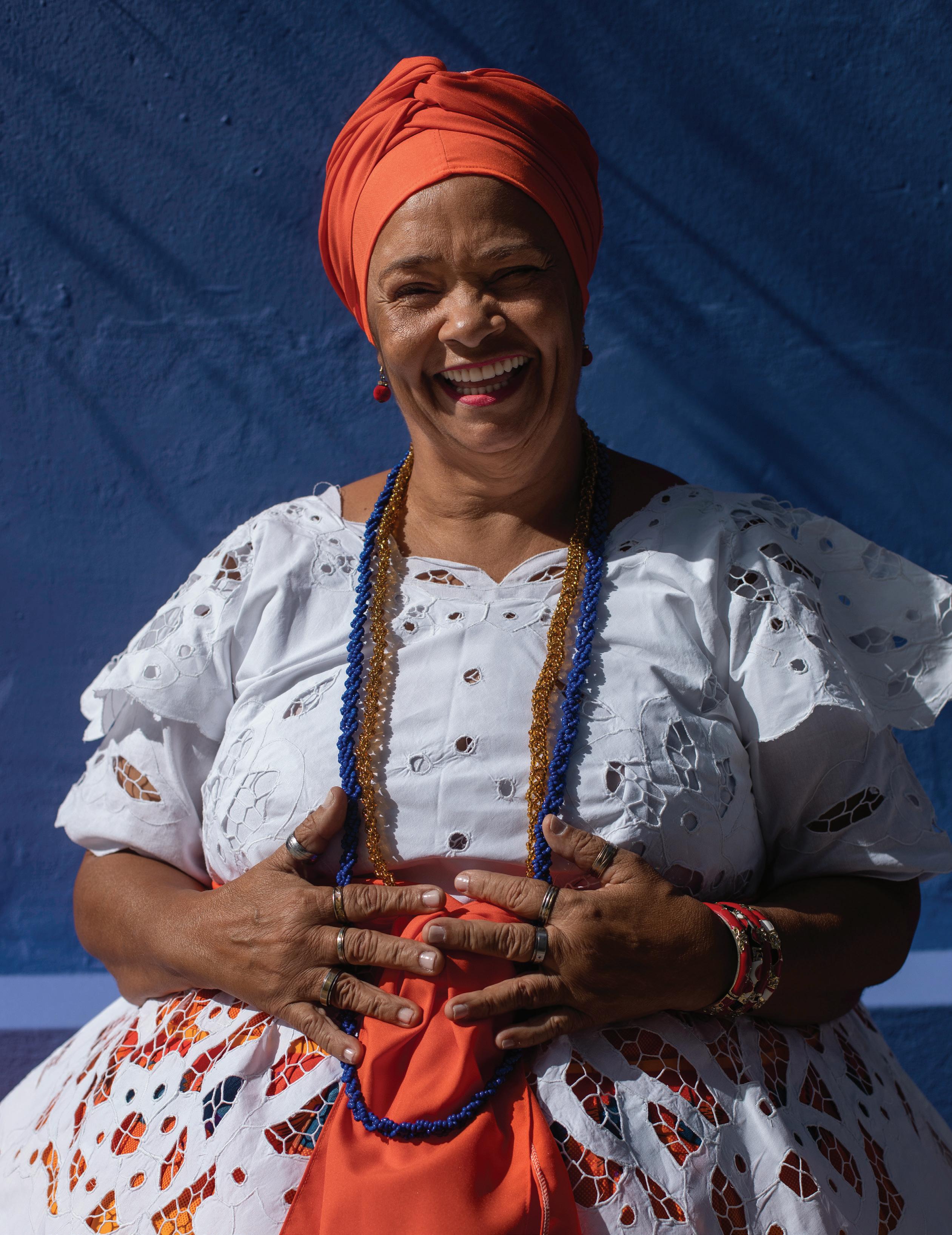

In Nigeria, akara can be referred to as the national cake of the citizens. It is mostly eaten with pap (fermented corn, millet or guinea corn) or agègè bread (white bread) endemic to the western region of Nigeria. Irrespective of the popularity of this snack, it is a major source of livelihood for many women in Nigeria.
The staple food isn’t given as much regard as it gets in Bahia. In Nigeria, it is seen as a cheap street snack to pass away hunger, or a household snack before Saturday cleanings. It is the cheapest, most filling bite to get on the go.
However, the women are beginning to complain of the sporadic rise in prices of black-eyed beans. Akara, as it is mostly called in the western region, is sold in different forms. It can be deep-fried in vegetable oil or palm fruit oil.
Akara is sold in the mornings and evenings under faded umbrellas. The women who make it use wide pans that are made locally and have edges covered in years of bean pudding crust. The pans are placed on an earthen fireplace.
The traditional people of Ilesha in the western region of Nigeria use palm oil to deep fry their paste and scoop out fist-sized balls. It is eaten as a household meal or a snack at burials and naming ceremonies. When in grief, food keeps Nigerians afloat. And so, the Yorubas celebrate a life well spent and a new life by eating akara.
“After my husband died, selling kosai was the only option I had,” says Salamat, an akara vendor from northern Nigeria. “I didn't go to school, so getting a decent job was impossible. I pay my children's school fees by frying kosai.
I sell it every morning and night.”

1 kilogram fradinho beans
300 grams grated onion
1 teaspoon dried malagueta pepper
2 liters dendê oil
2 garlic cloves, fine-chopped
4 grated ginger roots
1 pinch sea salt & fresh-ground black pepper
1 sliced avocado
4 sliced ripe tomatoes
4 sliced green onions
2 seedless chile peppers, fine-chopped
1 lemon (juice)
1 tablespoon vinegar
2 tablespoons olive oil
1. Soak the beans in cold water for 2 hours. Rinse and remove skin and eyes. Place the beans and onion in a pan, cover with water, bring to a boil and cook for about 40 minutes.
2. Drain and run this mixture and malagueta pepper in a food processor.
3. Heat a little oil in a large pan. Add the garlic and ginger for 2 minutes. Add the bean paste, season with salt and pepper, and cook over low heat. Stir with a wooden spoon so the paste doesn't stick to the pan. Cook 15-20 minutes, stirring occasionally. Taste the seasoning. Remove from heat and reserve.
4. Put oil in a heavy-bottomed skillet and heat it. When the oil is very hot, dip a dessert spoon in it. Fill the spoon with the bean paste, forming a firm, round cake. Fry it. Fill the pan with dumplings. Fry for 6-8 minutes, until golden brown. Drain on paper towels.
5. To make the salad, place the avocado, tomato, chives, and chili in a bowl and mix. In another container, mix the lemon juice, vinegar, olive oil, salt and pepper. Season the salad and serve it with the acarajé or, if you like seafood, with some fried shrimp.
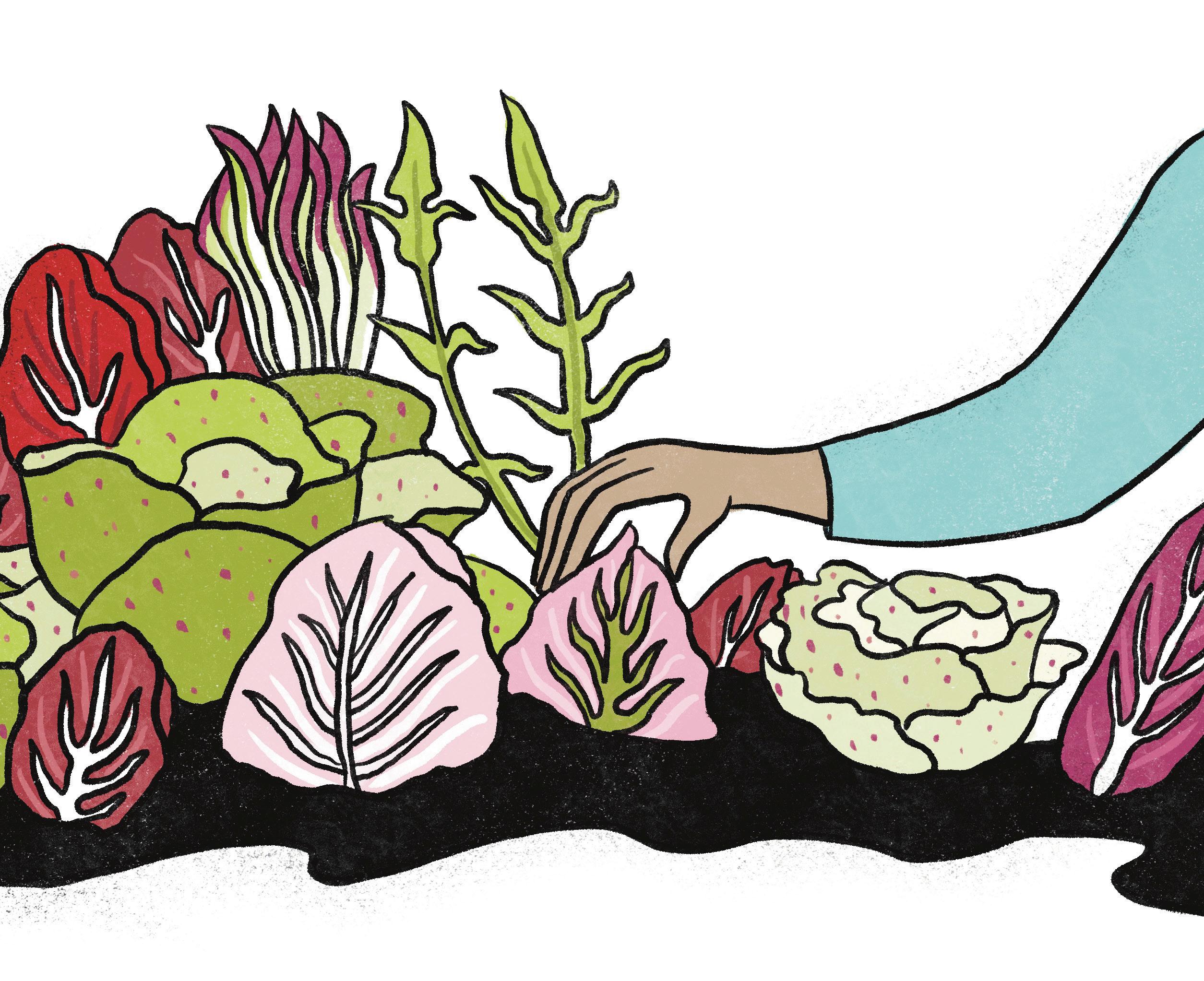
Selective breeding turned a scrappy wild plant into a produce-case knockout.
TEXT Margarett Waterbury ILLUSTRATIONS Alexandra Bowman
Spring has clearly arrived at Azienda Agricola Ferro Aristide, a large vegetable farm outside the city of Chioggia in Italy’s Veneto region. Blooming poppies and salvia line the roadsides. The temperature is mild, but low clouds hang over fields covered in rows of thick black plastic, beneath which white asparagus spears thrust their ghostly bodies upwards through the sandy soil like fingers of the undead.
Still, inside one of the farm’s buildings, four workers are busy processing thousands of football-shaped heads of radicchio di Treviso, one of Veneto’s iconic winter crops.
“These were harvested in December,” says proprietor Igor Ferro, a compact, energetic man in his 40s with shiny brown hair shorn short on the sides and styled almost vertically on top.
December was almost six months ago, but the packed flats of Treviso shine with dewy freshness, their ivory white midribs and delicate veins gleaming against deep burgundy leaves.
We don’t generally think of leafy vegetables as storage crops. Potatoes and onions can hang around for months, but those are roots—firm, sturdy, literally evolved to store energy—not this delicate structure of leaves and stem. But radicchio di Treviso has been bred for, among other things, this ability to be stored for a very long time. It has been selected , not by deity or chance, but by the cumulative decision-making of thousands of farmers.
Individually, most selection events are unremarkable. A farmer pauses briefly while considering which plants to allow to produce seed, eventually choosing one with a leaf shape that speaks to them, one with a particularly attractive color. Or a field floods and most plants die, leaving only a few hardy survivors to pass their genes to the next generation.
The result of these millions of moments of selection—some coordinated, some idiosyncratic, some entirely random— has been this: A crunchy, bitter, ovoid vegetable so closely linked to this specific Italian region that it is protected by the same laws governing Champagne and Stilton.
Ferro opens the door to a walk-in cooler in another part of the building. A wall of chill air heavy with the smell of vegetative life and death emerges. Inside, tall stacks of storage containers are filled with radicchio rosso di Chioggia, the firm, round, deep red radicchio Americans are most familiar with, and radicchio di Castelfranco, a conical pale green radicchio speckled with bright pink flecks. Each one is shrouded in decaying leaves and remains attac
hed to a grubby-looking section of root. They don’t look appetizing. They don’t even look particularly edible.
But as Igor peels back the desiccated outer layer of a radicchio di Castelfranco, he reveals pristine leaves of brilliant chartreuse. The interior of the head is crunchy and mild, with a slight bitterness and a satisfyingly silky texture entirely different from the watery crispness of lettuce. These Castelfranco will be cleaned, trimmed, soaked in tepid water, carefully “fluffed” open by hand to create a more open head and shipped to markets in Italy, Germany, Holland and England, where they will be marketed as i fiori che si mangia, the flowers you eat. It’s a surprisingly chic destiny for a plant that, in many parts of the world, grows happily along the side of the road. ***
Every variety of radicchio, from the pink rose-shaped Rosa di Gorizia to the sculptural oxblood tangle of Treviso tardivo, is a member of the same species: Cichorium intybus , or common chicory. A scrappy, weedy, blue-flowered plant native to the Mediterranean, common chicory is now naturalized and ubiquitous on most of the world’s continents. People all around the Mediterranean have been eating it for thousands of years. Core samples of soil from Bronze Age village sites in Veneto have revealed traces of pollen granules from the Cichorium genus. References to the plant’s culinary properties are found in texts from ancient Egypt, Greece and Rome. Horace and Pliny both not only ate it, but wrote about it, attributing health-giving, digestion-enhancing properties to its bitter flavor.
It’s not entirely clear when domestic radicchio branched off from wild Cichorium intybus , but the process appears to have been well underway during the Renaissance, and its epicenter was the area around Venice. References to “radicchio” can be found in texts from the 16th century, including a 1537 letter from author Pietro Aretino, a Tuscan writer who lived in Venice and was known for his satirical works and pornographic sonnets, instructing the recipient to plant “radicchio selvatico” (wild radicchio) with a little bit of nepitella (an Italian herb) for salads superior to plain old lettuce.
At some point along the way, the practice of forcing–digging plants out of the field, partially trimming the root, and allowing them to grow again in a dark, damp place, like a livestock stall or cellar–became widespread. Italians call this “imbianchiamento,” and it produces uniquely mild, sweet new growth with a pale color and crunchy texture.
Whatever Pietro Aretino was eating in the 1500s probably didn’t look much like what Italians can buy at markets
today. Despite the vegetable’s aura of tradition, many of the varieties available now are actually fairly new. Radicchio rosso di Chioggia, for instance, dates back only to around 1950, according to the consortium that promotes it.
Growers began selecting seed from variegated populations with lots of red on their leaves, and eventually produced a plant that produced a round head with primarily red leaves. An agricultural show in Castelfranco in 1914 was likely the official debut of the delicately speckled radicchio di Castelfranco, according to Andrea Giubilato, farmer and co-owner of Azienda Agricola Madre Terra near Caltana and a mentor to many young Italian farmers, although he says that mentions of “radicchio variegata,” or variegated radicchio, date back to 1900. Was radicchio variegata the same as radicchio di Castelfranco? Maybe.
By developing multiple named varieties of radicchio, many with a flamboyant appearance, growers began to tap into the same truth that powered the Beanie Baby craze or the enduring popularity of purebred dogs: Having several versions of something can make people more interested in it.
“The idea that different varieties could have an economic benefit? This economic impulse spurred diversification,” Giubilato says.
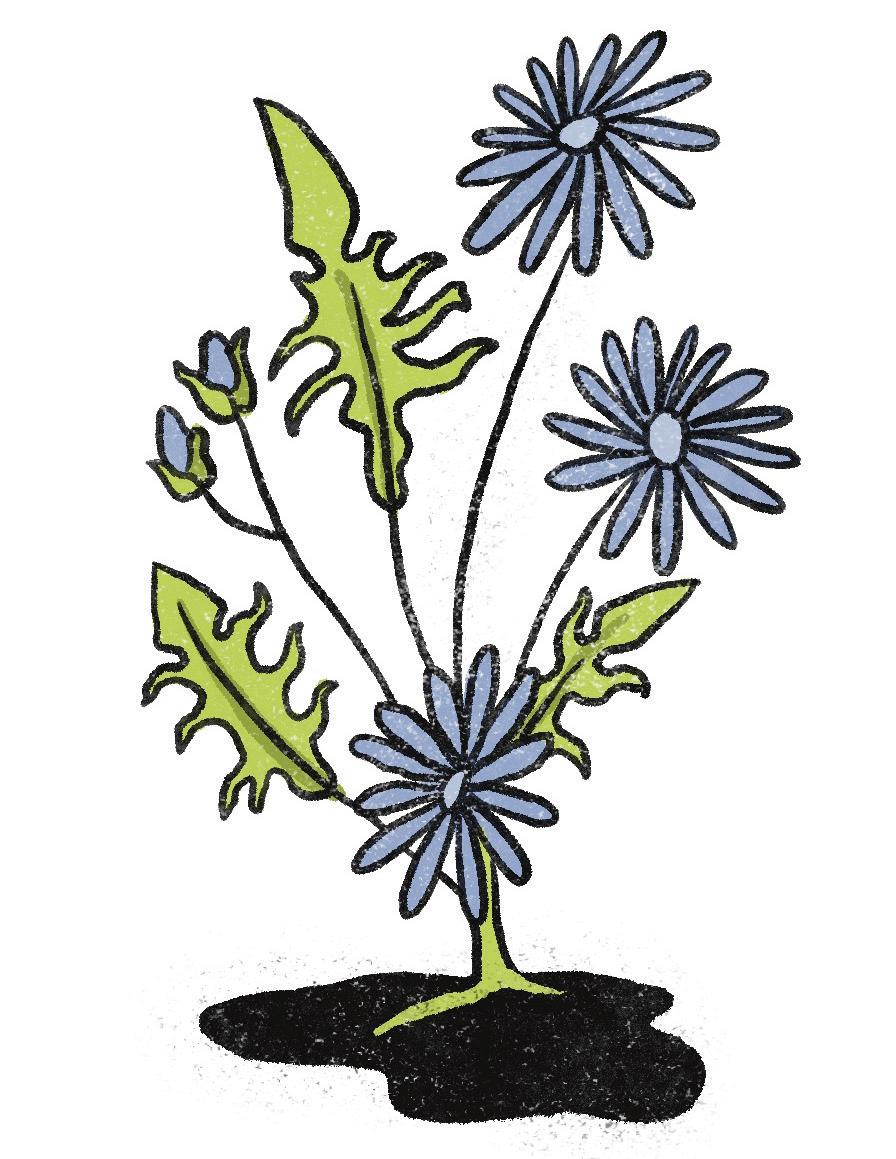
By selecting for new, ever more striking forms, growers could stand out in an increasingly sophisticated market. And radicchio, it turns out, is a willing partner when it comes to breeding for flourish.
Wild Cichorium intybus harbors an immense amount of genetic diversity, with many subtly different sorts that cross readily with one another to produce offspring with novel shapes, colors, forms and habits.
“There is a lot of diversity among plants, even in the named radicchio, so selection is always happening,” Giubilato says. “That diversity is inherent in the plant, and it emerges thanks to the ingenuity and creativity of farmers who save seed.”
Andrea Ghedina, co-owner of a seed company called Smarties.BIO that specializes in Italian leafy greens like radicchio, leaf broccoli, cabbage and other chicories, says one of his university professors said radicchio had so much inherent variability in its genetics that “if growers wanted to do it square and blue, they could.”
Until the named varieties became prominent, virtually all growers in Veneto saved their own radicchio seed, which meant that each year was a chance to fine-tune their selections. Genetics were a source of fierce pride. Giubilato recounts a regional legend of a house fire on one farm.
Rushing into the burning building, the owner emerged with their most prized possession in their hands: radicchio seeds. Another farmer traced the origin of their seeds back to an ancestor who fought in the Napoleonic Wars and returned home carrying a pocketful of seeds from a plant that had struck them as particularly beautiful. And, like precious family relics, their seeds were prized.
“Every radicchio grower saved and guarded their seeds jealously,” Giubilato says. “And diversity blossomed.” Each town, sometimes each farm, would have radicchio with a distinctive look.
But during the middle of the 20th century, Italy experienced a period of rapid social, economic and technological change often referred to as “the Italian economic miracle,” and Veneto was no exception.
After World War II, in the space of a generation, Italy transformed from an agrarian nation where most people’s lives ranged from humble to deeply impoverished, to a highly developed and wealthy global power. Like a radicchio emerging from cold storage, ruined components were
stripped away, one by one, to reveal something startlingly new and shiny.
“In 40 years, you went from the basket, to the donkey, to the horse, to the Ape [a small three-wheeled vehicle widely used on Italian farms], to the truck, to a plane,” Giubilato says. And with the plane, of course, came millions of tourists.
As Italy metamorphosed from a society in ruins to a society known for aspirational luxury, everything Italian, even something as seemingly unsuited for international consumption as a bitter leaf, experienced a kind of borrowed la bella vita glow.
Radicchio di Chioggia, in particular, went bigtime. It made heavy heads, which was good news for growers who charged by the pound, and its deep red color was becoming fashionable in salads. To get the uniform results demanded by distributors and markets, many growers began to purchase seed from companies that guaranteed compliance with distributor and market demands rather than save it themselves.
By the 1980s, demand had boomed to the point that many growers had ceased cultivating other traditional crops in the region like onions, celery, potatoes and carrots in order to grow as much radicchio di Chioggia as possible. Warm sandy soil, hoop houses, plastic row covers and new hybrids that tolerate hot weather made it possible to grow radicchio, traditionally a winter crop, almost yearround. The crop became disconnected from seasonality; high yields, continuous abundance and homogenization reigned supreme.
“Plants are big and beautiful, but they have lost some of their taste, and are more susceptible to disease,” Giubilato says, a condition he calls “il postmodernitá” of radicchio. Another characteristic of this agricultural postmodernism is a structured landscape of consortia dedicated to defining and promoting the various Indicazione Geografica Protetta (IGP), or geographically protected, varieties of radicchio.
Radicchio di Chioggia, for instance, received IGP status in 2008, which means only radicchio that is grown in a defined area in and around Chioggia and that adheres to the guidelines governing its appearance and cultivation can legally be marketed as radicchio di Chioggia. The following year, a consortium of 10 producers and five distributors was formed to “protect and promote IGP radicchio di Chioggia.”
Similar groups were created for other types of radicchio. The consortia have been successful in standardizing and

protecting regionally designated varieties of radicchio, but they have also had something of a calcifying effect on crop development, and the farm-to-farm diversity once found in this part of Italy may have suffered as a result.
Some farms still save their own radicchio seed. At Azienda Agricola Ferro Aristide, they save their own seed for radicchio di Castelfranco, making individual selections for every single week of succession planting throughout the fall and winter. Giubilato makes selections each year from his radicchio di Verona, saving only from plants that exhibit disease and cold resistance, color, tender veins and resistance to bolting. This kind of selection is a truly interactive process that results in a crop that fits its site and caretakers like a tailored three-piece suit.
Italy is no longer the only place that grows radicchio. California has had a radicchio industry since the 1980s, boosted in part by American’s increasing firsthand experience with Italy as a tourist destination. It mostly produces the ball-shaped radicchio associated with Chioggia, but more and more small-scale vegetable farmers in the United States and other parts of Europe are interested in the many other varieties of radicchio, especially because they make it possible to grow salad greens in the winter in the Northern Hemisphere.
Browse an American farmers market in December, and the odds are now fairly good you’ll find at least a smattering of speckled leaves, burgundy ovals and the occasional pale pink ruffle set against a sea of sturdy cabbage and kale. Many are grown from imported seed, but a few intrepid growers outside of Italy are embarking on their own breeding projects, growing plants that don’t look quite like any named Italian varieties at all.


Radicchio’s toughness means it is likely to be humans’ companion for the long haul, even as the world warms.
If modern varieties of vegetables like corn or broccoli are like French bulldogs—originally descended from something wild, but so distorted from their original form that they cannot survive on their own—then radicchio is more like a housecat. Domestic, but just one generation away from a successful reversion to wildness. Wander the lawns and pastures of Veneto and you will see wild, or perhaps feral, radicchio everywhere.
Fittingly, they are heterogeneous in appearance. Some have cup-shaped red leaves held low to the ground, like a rose without a stem. Others have long bundles of serrated green straps, almost like a dandelion. It is impossible to know whether any given plant is one generation away from domesticity, or a hundred.
Radicchio’s toughness means it is likely to be humans’ companion for the long haul, even as the world warms. Veneto and the entire Po River basin is experiencing a severe drought, with river levels at the lowest they’ve been in 70 years. In June of 2022, Rome tied its all-time highest temperature of 105° Fahrenheit.
“Radicchio is so adaptable that it will live,” Giubilato says, although he adds with a grimace that too much heat will affect the taste—a bitter food for a bitter time. Still, perhaps future growers will find ways to select for sweetness even in extreme heat, just as they have selected for health, uniformity or to satisfy an artistic urge.
Through selective breeding, we impose our values on domestic plants. Crops like radicchio have evolved, and continue to evolve, in response to human desires: A redder leaf, a more uniform shape, adherence to market standards, the ability to silently grow a crisp, tender heart while buried in a dark, manure-filled corner of a barn through the cold months of winter.
Like all human desires, achieving them doesn’t often bring the permanent sense of satisfaction we anticipate. But radicchio is a good collaborator; it is willing to keep trying.
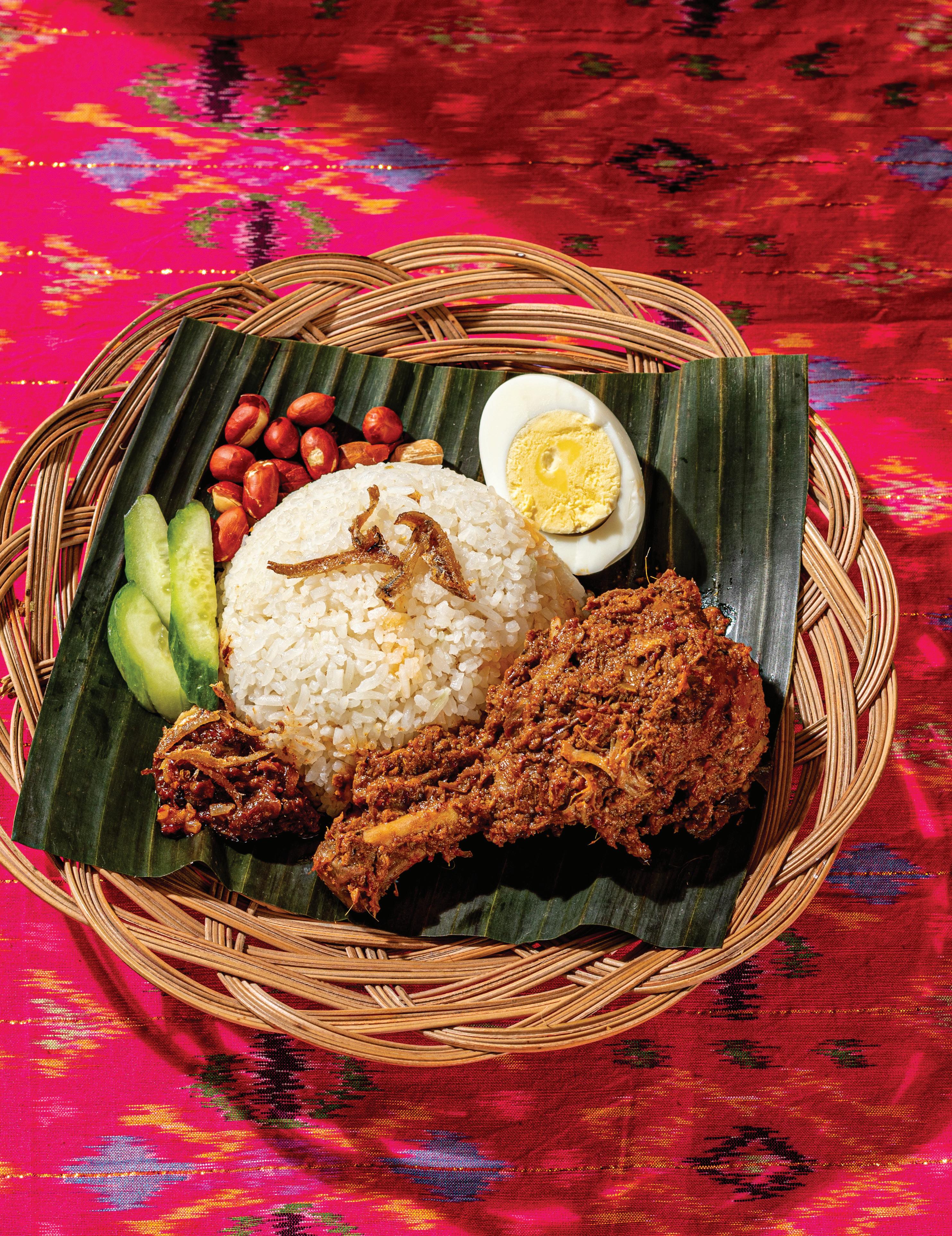
On Christmas Island, remoteness and colonial restrictions shape cuisine just as much as cultural connections to Southeast Asia.
TEXT Annie Hariharan PHOTOGRAPHY Melati Citrawireja
Salawati Mohamed, or Kak Wati as she is known, has no qualms about sharing her recipe for chicken rendang with anyone who asks for it, particularly during Eid. She is a resident of Christmas Island, an Australian offshore territory and the only place in the country where Eid is a public holiday.
“During this time, we don’t just visit our own families, we visit everyone we know,” she says. “Every night for about two weeks we go to someone’s house to eat and celebrate.”
Her chicken rendang is often a hit.
“It’s just the standard way to make rendang,” she says modestly. “The base is always onions, ginger, galangal, lemongrass, turmeric and toasted coconut paste. But I use green bird’s-eye chile and coriander seeds, and that gives it a different color.”
Many people know that rendang, a dry, flavorful, coconut milk stew, is common in Malaysia, Indonesia and Singapore. But not many know that it is also a standard dish on Christmas Island. The island’s green-tinged rendang reflects the Indonesian version rather than the red-brown color common in Malaysian or Singaporean rendang.
“Rendang is popular here, especially during special occasions like Eid, birthday parties and other celebration[s],” says Zuraidah Mohamed, another Christmas Island resident. “Or sometimes whenever we just feel like it.”

Yet, making chicken rendang on the island requires planning and modification because sourcing the ingredients can be a challenge. In the middle of the Indian Ocean, Christmas Island lies 360 miles from Java, 930 miles from Kuala Lumpur and 1,600 miles from Perth. Many residents depend on a freight plane or ship from Perth, itself one of the most isolated cities in the world, for pantry items, spices, fruits, vegetables and frozen meat. This represents about 60 to 90 percent of the island’s fresh produce, but the freight has become less reliable in the time of Covid.
As for protein sources, there are free-range chickens on the island, which are small and bony compared to the frozen but fleshier chicken from the mainland.
“The island chicken’s actually better for rendang because it’s the bones that give it flavor,” Kak Wati says. “But if you’re not used to it, you will struggle a bit. The younger people here prefer the frozen chicken.”
Still, various food limitations have influenced residents’ food habits and preference. ***
There are a few reasons why the food on Christmas Island is similar to Malaysian and Indonesian food: the proximity to Southeast Asia, the tropical climate—and many of the 1,500 residents on Christmas Island trace their heritage to various parts of Malaysia, Indonesia, Singapore and China. This migration is the byproduct of British colonization and rule. Britain annexed Christmas Island, an uninhabited island, in 1888, administering it as part of its Singapore colony.
The island was and still is rich in phosphate, and mining magnates from British Phosphate Commissioners (BPC) brought over indentured laborers from Southeast Asia and China to work. BPC infamously paid Asian laborers one-fifth of what white laborers received until workers organized a mass strike in the late 1970s.
These workers brought over their food, religion and culture, which is why Christmas Island is dotted with mosques, churches, and Buddhist and Taoist temples. Eid, Christmas and Chinese New Year are also a big deal here.
When Britain transferred sovereignty over Christmas Island to Australia in 1958, it severed the residents’ political and administrative links to Singapore and Malaysia. Yet the islanders’ language, food and cultural links to Southeast Asia persevered.
In addition to rendang, that heritage is evident in foods like roti canai, murtabak and curry puffs, sold in roadside
stalls on streets named Jalan Pantai (Malay for Beach Street). Despite this, most roundups of Australia’s notable food exclude Christmas Island. This omission is not overtly sinister; it has something to do with the tyranny of distance. But perhaps somewhere in the back of the minds of Australian people, Christmas Island is a tack-on. An afterthought.
***
There is an ongoing joke that Australians sometimes forget to include Tasmania on maps. In 2016, a major supermarket had to recall its Australia Day merchandise as it did not include the island-state in its images. In comparison, Christmas Island and the Cocos Islands, two of its external territories, are not even cursory dots on federal agencies’ map, and nobody seems to notice.
For many people, including myself, Christmas Island is synonymous with the country’s offshore refugee and immigration detention center and a visual representation of the government’s cruel policy to detain people arbitrarily and indefinitely. There are an estimated 200 people in this detention center; as recently as May 2022, the Australian Border Force transferred another 12 immigration center detainees to the highly secure military camp on Christmas Island.
When Christmas Island starts trending on social media, it is rarely because of something positive or uplifting. It’s not for Kak Wati’s chicken rendang recipe. Karenn Singer, a resident of Christmas Island, believes that people’s opinion
Most roundups of Australia’s notable food exclude Christmas Island. This omission is not overtly sinister; it has something to do with the tyranny of distance. But perhaps somewhere in the back of the minds of Australian people, Christmas Island is a tack-on. An afterthought.
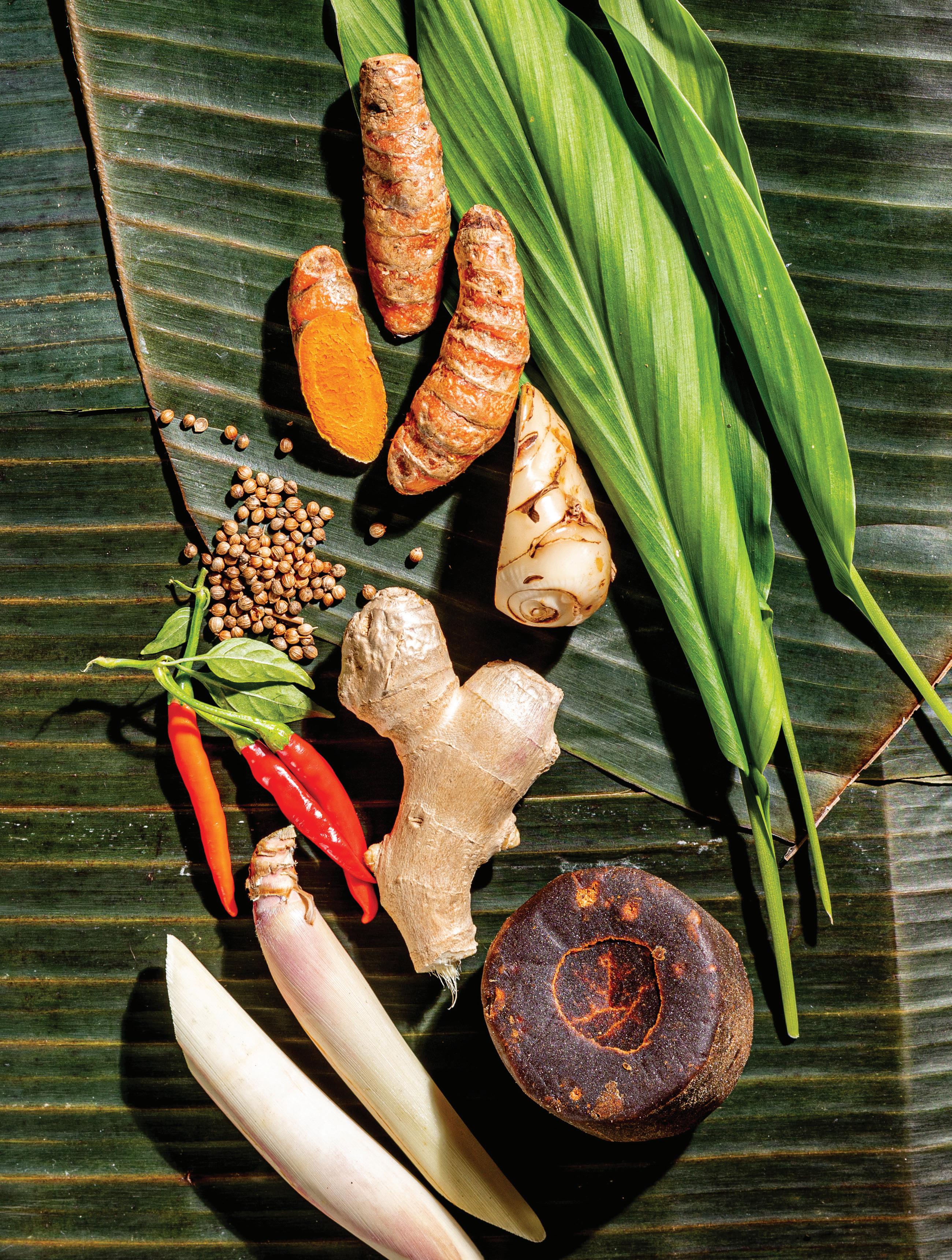

of the island depends on where they get their news from and what their interests are.
“Yes, many people just assume it is an immigration detention center, but for people interested in nature or birdwatching, this is a very unique environment,” she says. “People who do visit here are blown away by its natural beauty. It’s an outdoor playground for diving and snorkeling.”
In fact, almost two-thirds of the island has been declared a national park, and it is home to various endemic species including the red crabs that are adorable-looking and less scary than the giant, tree-climbing coconut crabs that also live here. Every November, the red crab migration draws tourists and is truly a unique sight to behold.
Amid all of these different identities, Christmas Island is home to people who have lived there for generations, are proud to be Christmas Islanders and occasionally post enviable photos of fishing trips and sunsets from their backyard. Some people volunteer to run the website Christmas Island Stories, to document that the island is more than a detention center or escape for adventurous travelers.
These idyllic photos and stories, though, sometimes mask just how isolated and isolating the island can be. If any of the residents need medical assistance or are about to give birth, they need to take a 3.5-hour flight to Perth because
medical care is limited. No babies have been born on the island itself in 20 years. ***
Medical treatments are not the only limitation; food security and availability is an ongoing issue on the island. Planting herbs, fruits and vegetables might sound like a sensible option to mitigate this, but it is challenging as the soil is not fertile. Some fruits, like papaya and mango, fare quite well, but islanders lament that it is a struggle to grow vegetables.
There is an option to forage for food in the jungle, as chile peppers grow wild here, as do sweet potato leaves and a leafy green known as sayur meranti. But this is limited to those who are willing and knowledgeable. For others, they have to be creative or roll with the punches.
David Chan, the chef of Lucky Ho restaurant on Christmas Island, is an old hand at dealing with food stock.
“There’s always ingredients that are missing, so I have to substitute with whatever I have,” he says. “Locally, we can get bok choy, eggplant, long beans, runner beans, curry leaf and lemongrass, but it depends on seasons, and it is not enough for everyone on the island. So, we still rely on the freight boats. In the last few weeks, though, you cannot find any green vegetables anywhere. People are going mad.”
Despite the island’s proximity to Indonesia, Malaysia and Singapore, residents have to source food from within Australia to meet the country’s strict regulations on biosecurity and food imports. This means food has to travel three to four times farther and costs more, which is a common problem for many colonized offshore territories, including Puerto Rico and New Caledonia. For comparison, an orange can costs A$2.50 on Christmas Island when it costs A$0.70 to A$0.80 in major cities in Australia.
“I run a Chinese restaurant and use a lot of products like soy sauce, plum sauce, oyster sauce, chili sauce,” Chan says. “The products we get on the island are originally from Malaysia. But I have to wait till it gets to Perth and then sent on a ship to Christmas Island.”
Singer talks about how these scarcities build up resilience in the community and encourage people to look out for each other.
“We have fruit trees in our garden, and when there’s an abundance, we trade it or share with friends,” she says. “Recently, we traded avocado and bananas for dragon fruit. We got used to eating frozen food too; many people will have a large freezer to store food, while waiting for the freight plane or ship. It’s doable but challenging for people with food or dietary requirements.”
Because of this, when Singer is away from the island she enjoys going to fruit and vegetable shops.
“It’s nice to be able to buy and cook whatever I want without having to plan,” she says. “I don’t have to make sure my one lettuce lasts two weeks.”
Although food availability is an ongoing issue, some people on Christmas Island have not only adapted but thrived.
“Most of the foods we eat are very similar to what you’ll find in Malaysia and Indonesia,” Zuraidah says. “We do like food from other countries, as well, and try other recipes we find online. My husband, Sujangi Buang, makes a lot of Chinese dishes, Western roast, steaks, chicken parmigiana, spaghetti and lasagne with all the salads and sauces. On Christmas Island, if you want to eat something, you either make it yourself or ask someone to make it for you. It is not sold at local shops apart from some night market stalls.”
Zuraidah and Sujangi’s varied diet is partly a reflection of their diasporic identity. Zuraidah traces her origins to Malaysia and has lived on Christmas Island since she was two years old, while Sujangi is a fourth-generation, Indonesian-Singaporean islander. Nevertheless, they are
limited by food availability, just like everyone else on the island.
“We tend to have issues with freight to the island, so sometimes the store shelf and fridges are pretty bare,” Zuraidah says. “Even when we do get fresh fruit and vegetables, it can be expensive. Sometimes we get our daughter, who lives in Perth, to express-post essential ingredients to us.”
For reasons Zuraidah cannot explain, she and her husband have fared better than most people in their attempts to grow herbs and vegetables, such as lemongrass, galangal, ginger, turmeric. Fortuitously, these are also the core ingredients for rendang.
When they do cook rendang, they try to recreate the taste they remember from home, which means experimenting with different types of recipes. They use readymade rendang powder or make it from scratch using either dried red chile or fresh green bird’s-eye chile to give it the recognizable green tinge.
Over the decades, Zuraidah and Sujangi have also learned the art of ingredient substitution just like Chan has in managing his restaurant.
“Rendang recipe calls for coconut milk, but we might use UHT milk,” Zuraidah says, referring to ultra-high temperature milk, which comes in sterilized containers and is shelf stable. “We might also use store bought toasted coconut paste.”
You might think it would be easy to source coconut products from a tropical island. Yet on Christmas Island, there are two limitations. One is the lack of sandy beaches for coconut trees to thrive in abundance. Second is the presence of coconut crabs, which can grow up to a meter across, climb coconut trees and break the fruit before humans can access it. Because of this, islanders either use UHT milk or leave it out completely, which results in a waterier rendang.
“Most times we have the essential fresh ingredients from our garden,” she continues, “but if we are out, we use dried galangal or frozen turmeric leaves.”
Zuraidah’s attitude perfectly encapsulates eating and cooking on Christmas Island. The residents have learned there is no point being pedantic about the ingredients because it might not be available when they want it. Rather than giving up, they simply shrug their shoulders, use the closest substitute and share with anyone who asks.
Get to know this Whetstone
“ I’ve been gestating for quite some time, feels like my whole life, on the issue of our economic system, and trying to understand why we continue to allow it to undermine the things that we care about so deeply, why it continues to destabilize again” Rebecca Burgess says. “In the world that I inhabit, that’s watching Indigeneity and textile cultures that are place-based being eroded by a consistent extraction of value from whatever the economic model deems as valuable at the time.”
That world she inhabits is, at least in part, Fibershed, a nonprofit organization that brings together protection of traditional fiber practices, promotion of climatebeneficial agriculture and restoration of regional textile manufacturing.
If these issues sound similar to concerns we might have around foodways, it’s because they’re identical.
“[Food and fiber] come from the same acres of land, they come from the exact same soil microbial communities,” Burgess says “The soil under my feet is the soil that produces my food, my fiber could be producing my natural medicine and fuel as well. And I think of the crop rotations that occur in a cotton system. Cotton is grown in our region with tomatoes and onions and garlic and cantaloupe. Wool is coming from sheep that are grazing in the vineyard systems and in the pear orchards. Fiber is not its own monolith. Fiber is a part of food. It’s almost a now considered a byproduct of the food system.”
For Burgess, presenting this information in an audio format added a sense of immediacy.

“I was really excited by the opportunity to be able to interview people who I admire and get their…voices, their inflections and cadence, and everything that they bring to the table in an audio format to describe their life’s work,” Burgess says. “That was really exciting, and I just don't think anything beats hearing from someone firsthand.”

You can find season 1 of Weaving Voices wherever you listen to podcasts.





